Matador Network's Blog, page 474
May 20, 2022
11 Key Largo Airbnb Rentals To Experience the Best of the Keys

Florida Keys is the number one underwater diving spot in the US but Key Largo has the monopoly on the best sites. Before getting acquainted with the aquamarine waters and coral reefs, you need a place to hang your wetsuit. Dip into our selection of oceanside condos and vacation homes to find your new favorite Airbnb Key Largo.
Romantic Airbnbs in Key Largo for twoFamily-friendly Airbnb Key Largo rentalsKey Largo Airbnb rentals for larger groupsWe hope you love the Airbnb Key Largo rentals we recommend! Just so you know, Matador may collect a small commission from the links on this page if you decide to book a stay. Listed prices are accurate as of the time of publication.
Romantic Airbnbs in Key Largo for twoWaterfront sunsets in a relaxing spot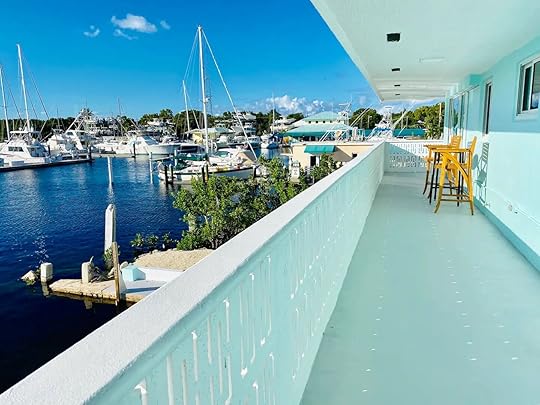
Photo: Airbnb
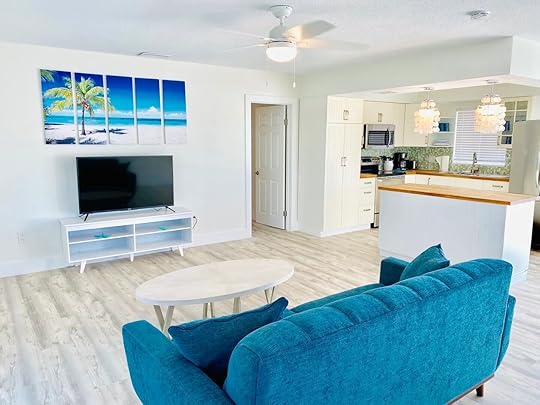
Photo: Airbnb

Photo: Airbnb
Freshly renovated for the season, this elegant bungalow overlooks a dock frequented by nurse sharks, manatees, and seabirds. All rooms come with a view – even the laundry nook. There’s no better place to catch one of Key Largo’s legendary sunsets than from the private porch with a view of the bobbing yachts. The host is a licensed charter captain and can arrange fishing trips, eco-tours, and golden hour cruises.
Two guests, one bedroom
Price: $300 per night
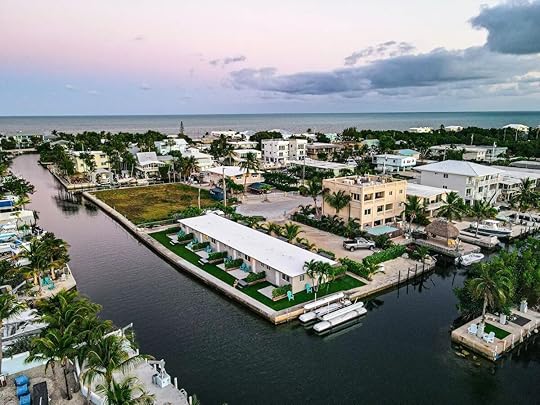
Photo: Airbnb
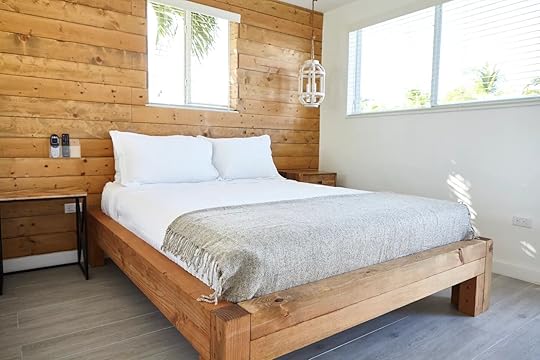
Photo: Airbnb

Photo: Airbnb
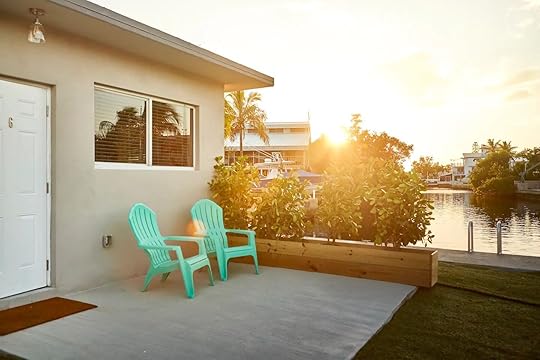
Photo: Airbnb
This waterside Key Largo Airbnb is a dream base for aquatic-loving couples. The canal leads to the ocean where you’ll find such top diving sites as Rodriguez Key, Christ of the Abyss, and innumerable shipwrecks. An open-plan studio layout invite the light to circulate freely while the wooden walls add a beach shack vibe. After a day exploring the underwater sights, the patio is an unbeatable place to kick back with a beer and watch the sunk sink.
Four guests, one bedroom
Price: $205 per night
Traveling to Florida? Check out Matador’s Florida accommodations guides:15 beautiful Florida Airbnbs for every type of travelerThe best 11 Airbnbs near Universal StudiosThe 12 best Miami Airbnbs from South Beach to Little Havana8 of the coolest Airbnbs near Disney World, Florida15 beautiful Florida Airbnbs for every type of traveler6 Kissimmee Airbnbs for a multi-generational family Disney trip11 Key West Airbnbs to experience the best of the island11 gorgeous Florida Keys Airbnbs to catch the ‘Keys Disease’Bayside cottage with beach & fishing pier
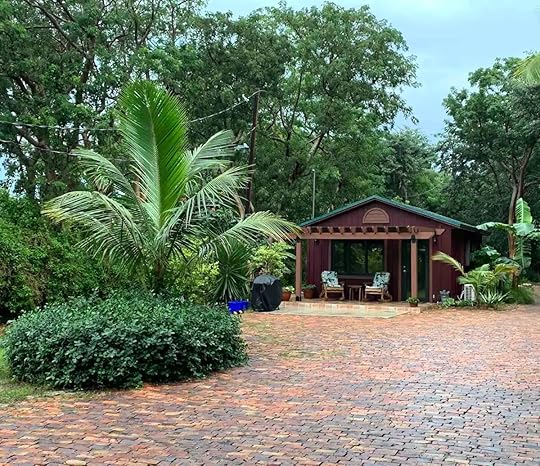
Photo: Airbnb
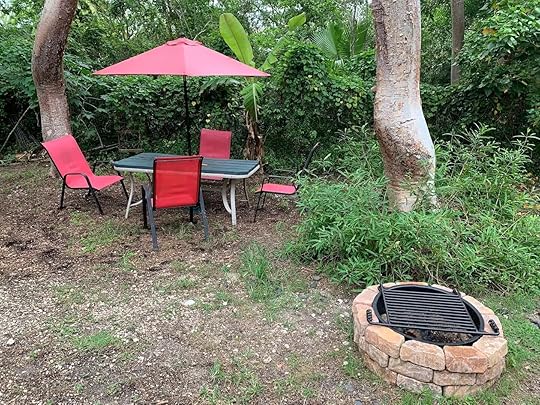
Photo: Airbnb
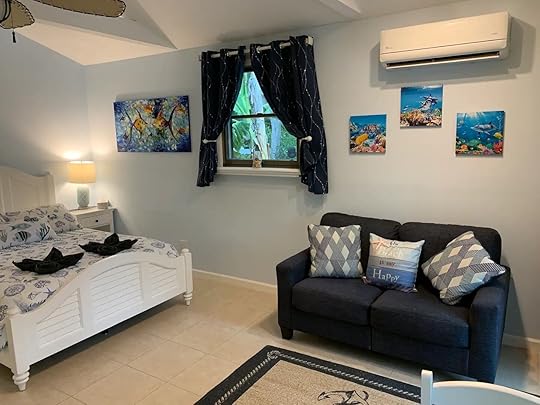
Photo: Airbnb
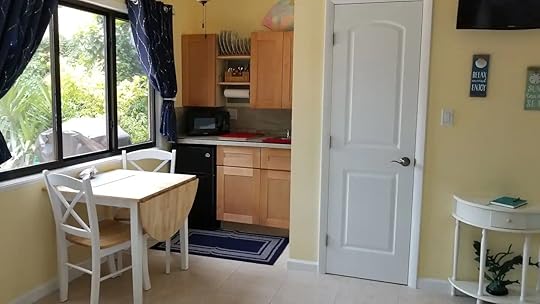
Photo: Airbnb
Cocooned by lush palms and foliage, this jungle cabin provides a castaway experience. Take a seat on the patio and keep an eye out for iguanas, birds, squirrels, and other curious critters. Interiors are snug but functional with a kitchenette and bathroom. You’ll need to do the lion’s share of your cooking al fresco with the grill. A romantic Key Largo Airbnb retreat for nature-loving couples.
Two guests, one bedroom
Price: $200 per night
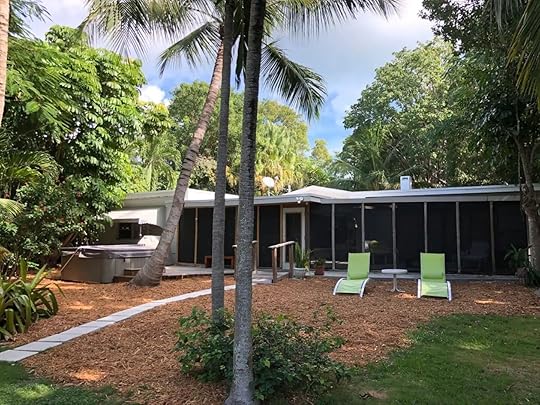
Photo: Airbnb
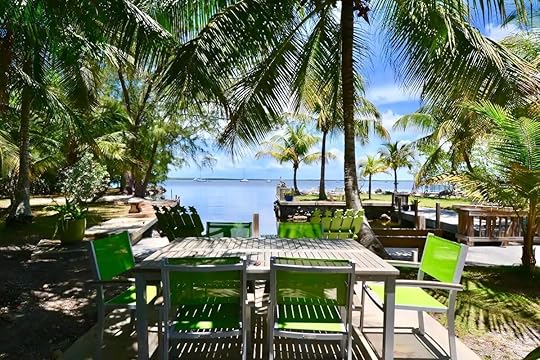
Photo: Airbnb
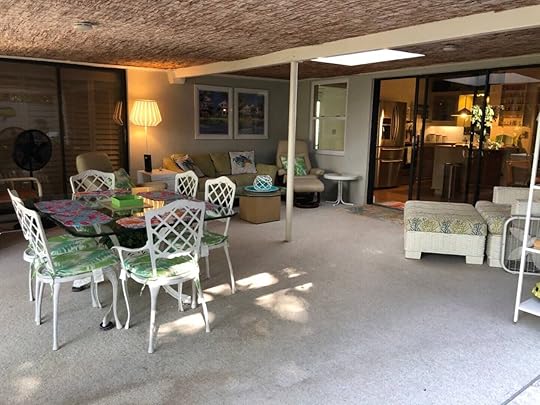
Photo: Airbnb
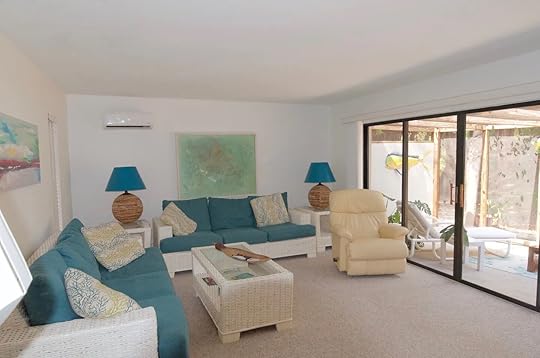
Photo: Airbnb
Although convenient for the restaurants and amenities of central Key Largo, this waterfront rental is set among an acre of lush greenery. The backyard overlooks the sound and comes with a swimming basin. Sunsets here are unreal and made all the better by the external hot tub. You’ll have access to a fleet of kayaks during your stay. The not-for-profit Dolphins Plus Marine Mammal Responder is based next door and will delight the little ones.
Six guests, two bedrooms
Price: $535 per night
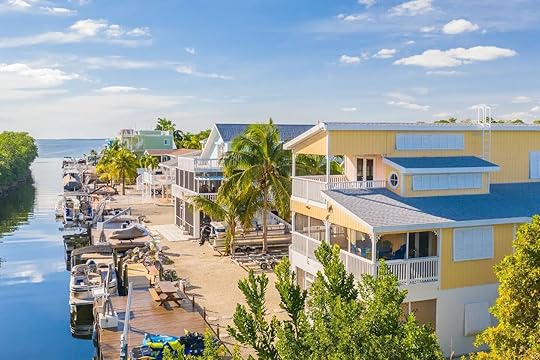
Photo: Airbnb
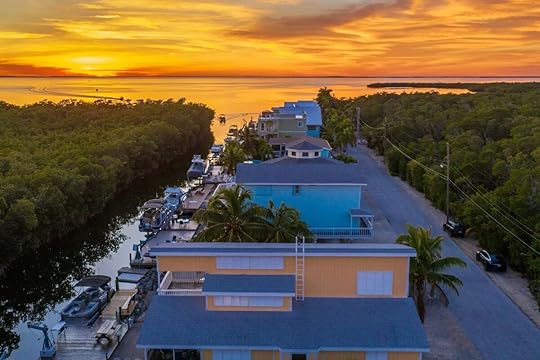
Photo: Airbnb
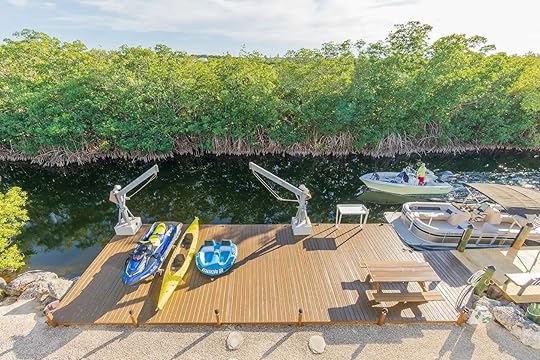
Photo: Airbnb

Photo: Airbnb
Surrounded by mangroves, this waterfront Airbnb in Key Largo is situated in a peaceful gated community with direct canal access to the bay. Kayaks are on hand to make the most of this perk and you shouldn’t be surprised to spot manatees, dolphins, and sharks on your morning paddle. Rental includes 80 feet of dock space, fish-cleaning units, and a fire pit for exclusive use.
Six guests, three bedrooms
Price: $700 per night
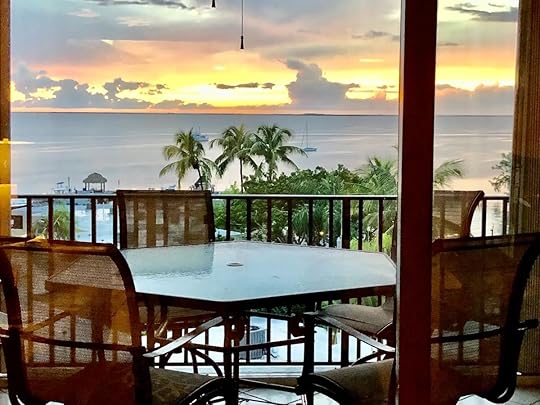
Photo: Airbnb
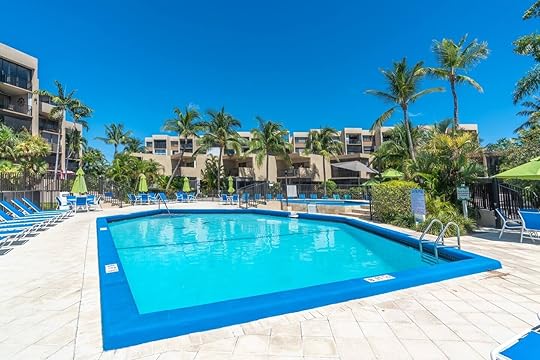
Photo: Airbnb
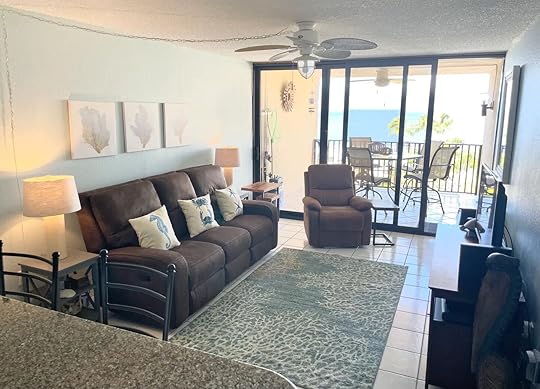
Photo: Airbnb
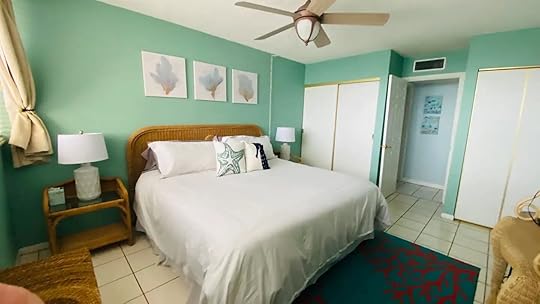
Photo: Airbnb
Located on the fifth floor of an oceanside residential block, this swanky condo looks out over Blackwater Sound. The unit is fitted with sumptuous sofas and beds to guarantee you get your beauty sleep after a day at sea. Communal amenities at Moon Bay that you’ll have full access to include two heated pools, tennis courts, and a games room.
Six guests, three bedrooms
Price: $250 per night
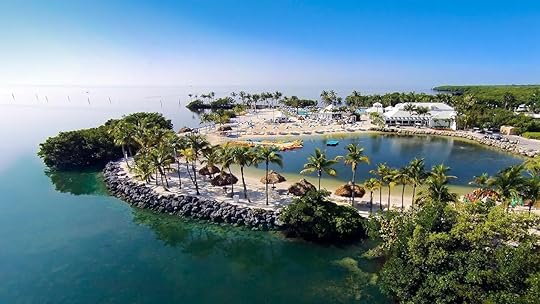
Photo: Airbnb

Photo: Airbnb

Photo: Airbnb
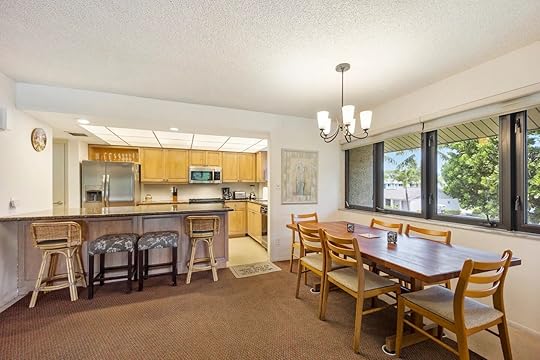
Photo: Airbnb
Check into this North Key Largo Airbnb condo if you’ve got your eyes on the Key Largo National Marine Sanctuary. Although this is one of the most peaceful settings within the Keys, restaurants and bars are a mere stone’s throw from the complex. The rental is equipped with all the mod-cons you could dream of including Bluetooth speakers, Google Home, and multiple Smart TVs.
Six guests, two bedrooms
Price: $390 per night
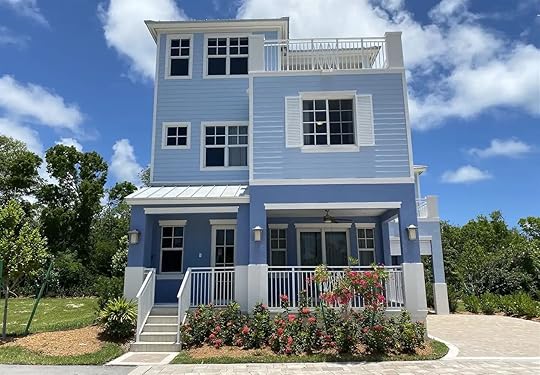
Photo: Airbnb
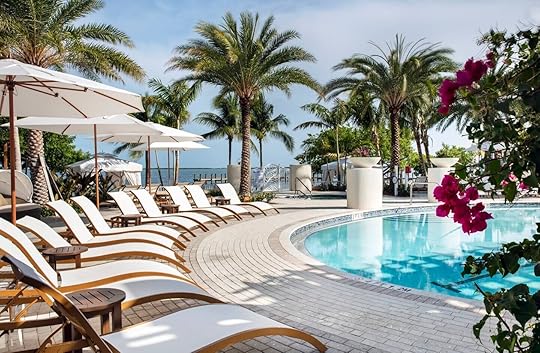
Photo: Airbnb

Photo: Airbnb
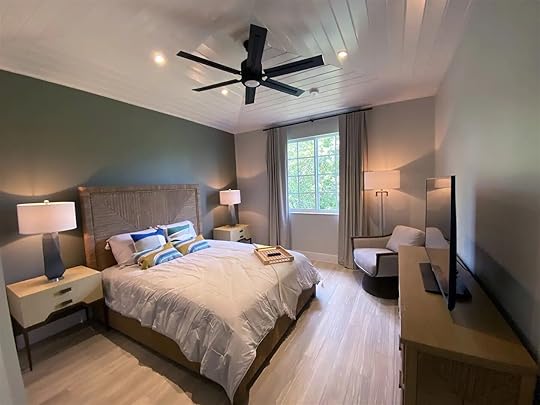
Photo: Airbnb
This luxurious vacation rental home with captivating ocean views is located in the desirable oceanfront community of Playa Largo Ocean Residences. The home is meticulously crafted in the essence of “old” Florida with oval soaking tubs and superior furnishings adding a deluxe finish. A gigantic outdoor terrace complete with a dining area, grill, and wet bar will delight social butterflies within the group. Pets are welcome and guests are welcome to use the resort pool.
Seven guests, three bedrooms
Price: $1,070 per night

Photo: Airbnb

Photo: Airbnb

Photo: Airbnb
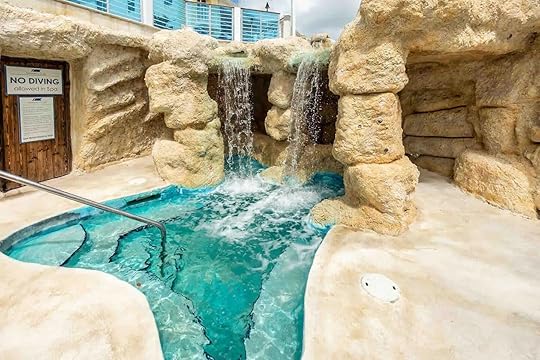
Photo: Airbnb
This homely townhouse comfortably accommodates ten guests and grants access to the resort’s communal facilities. At the heart of the complex, you’ll find a spacious swimming pool as well as a spa pool with waterfall features. All floors benefit from lots of natural light while the balconies are the perfect place to watch the day go by. A fantastic Key Largo Airbnb for family groups.
Ten guests, four bedrooms
Price: $750 per night

Photo: Airbnb

Photo: Airbnb

Photo: Airbnb
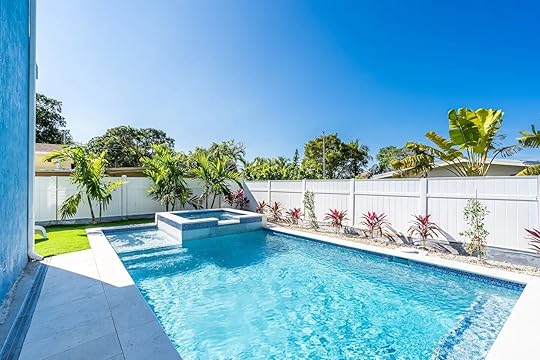
Photo: Airbnb
This neat rental property is brand new to the Airbnb Key Largo scene. Interiors follow a soothing, blue theme that makes it easy to shrug off any worries and slip into vacation mode. All amenities are state-of-the-art including a professional kitchen. A two-tiered pool awaits you in the backyard while balconies provide a space for reflection.
Fourteen guests, four bedrooms
Price: $740 per night
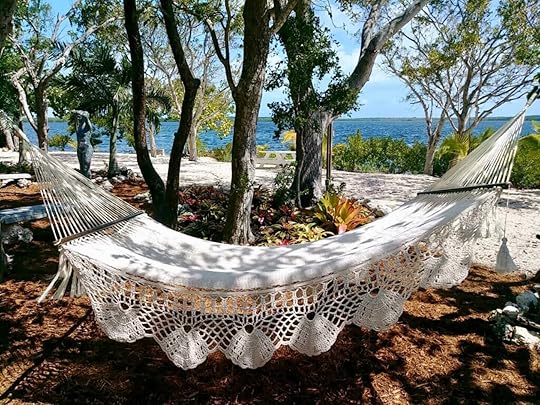
Photo: Airbnb

Photo: Airbnb
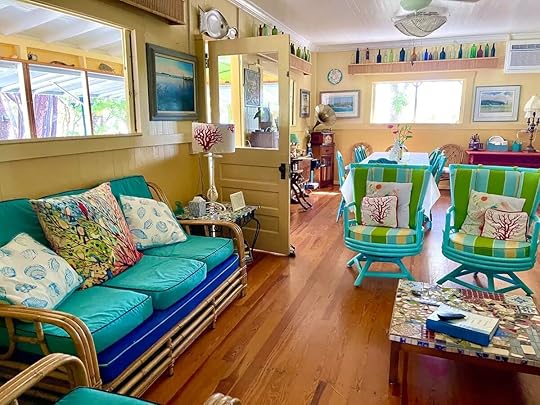
Photo: Airbnb
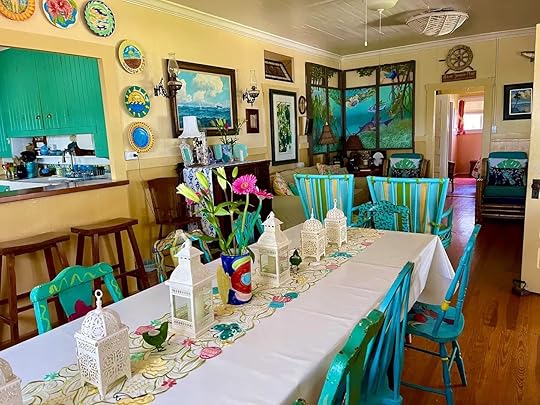
Photo: Airbnb
This 100-year-old house evokes a sense of what Key Largo was once like. Set on 2.5 acres and surrounded on three sides by water, this secluded Airbnb Key Largo invites you to bask in the sound of the waves and indulge in R&R. Conch-style architecture and suites that burst with color and character ensure that this remote rental feels like a proper home away from home. Pets are welcome and special events are permitted with advance approval. 
Twelve guests, seven bedrooms
Price: $1,890 per night
12 Airbnbs in Charleston for a Bachelorette Party Filled With Southern Charm

CHARLESTON OFFERS something no place else in the South does: Historic charm blended with the country’s best culinary and party scenes. This is what makes Charleston the best city in the South for a bachelorette party. Gorgeous sightseeing complements the city’s legendary food and drinks scene, and several chilled-out beaches line the city’s coast. These Airbnb Charleston listings are the best for a bachelorette party, from historic downtown guest houses to homes in some of the city’s more eclectic neighborhoods.
We hope you love the spaces and stays we recommend! Just so you know, Matador may collect a small commission from the links on this page if you decide to book a stay. Listed prices are accurate as of the time of publication.
Charming historic downtown house with pool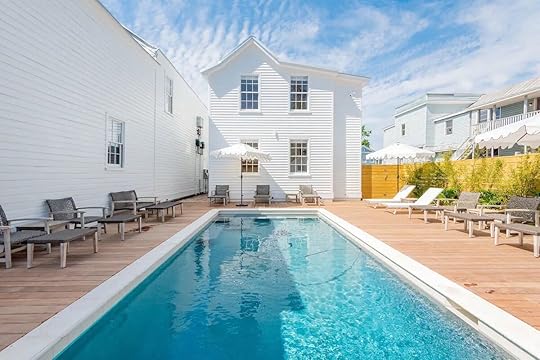
Photo: Airbnb
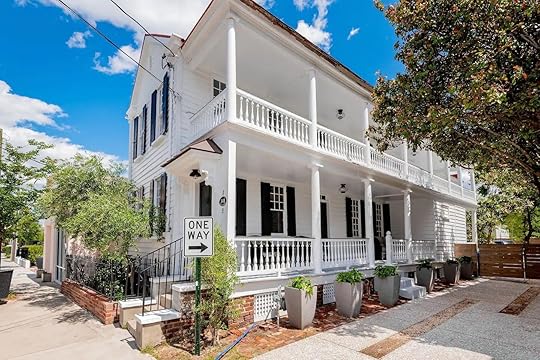
Photo: Airbnb
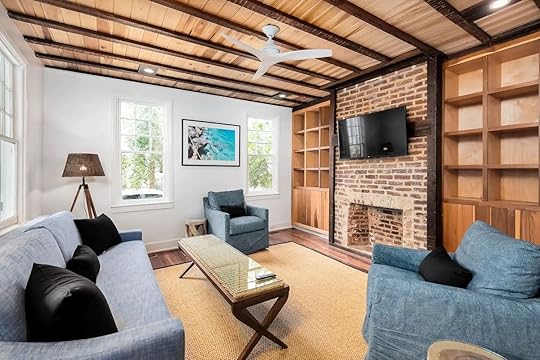
Photo: Airbnb
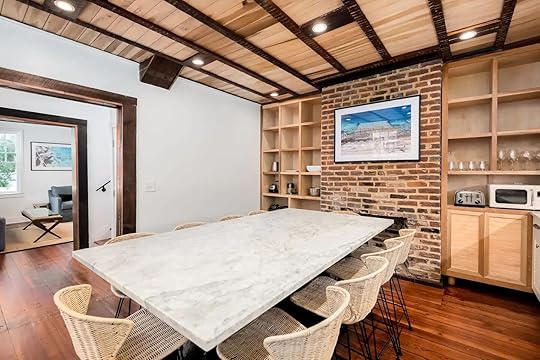
Photo: Airbnb
This historic home, which uses modern decor with vintage touches, can welcome up to ten guests. The stay is close to everything including the historic district, Charleston’s French Quarter, and other points of interest downtown. Spend the day sightseeing, and return for a spa night to make use of the home’s large pool and chill-out area in the back. This stay is also a great base for a walk through historic Charleston.
Ten guests, four bedrooms
Price: $759 per night

Photo: Airbnb

Photo: Airbnb
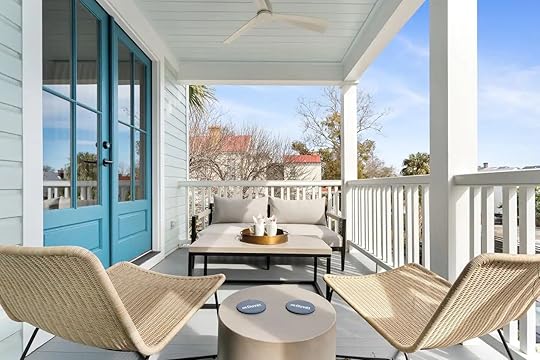
Photo: Airbnb

Photo: Airbnb
Why tour historic homes when you can sleep in one? This large historic house has been recently renovated and has a wraparound porch, as well as a private courtyard with a pool, perfect for sipping wine and watching the sunset. Just a short walk to the action on Upper King Street or a short ride to Rainbow Row and the Battery, this stay could be the perfect home base for exploring downtown Charleston.
Ten guests, four bedrooms
Price: $642 per night
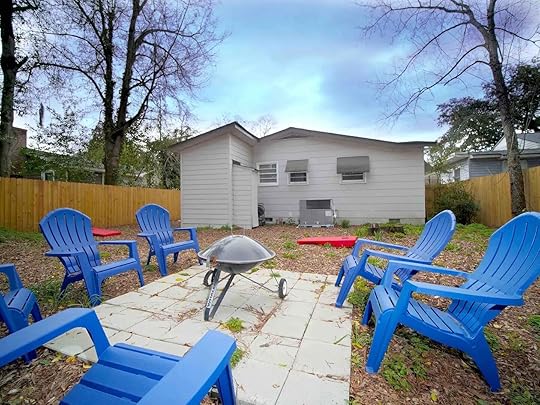
Photo: Airbnb

Photo: Airbnb

Photo: Airbnb

Photo: Airbnb
If your party has members traveling by plane, consider this three-bedroom home only eight minutes from the airport. Located in Park Circle, the historic district of North Charleston, this stay is within walking distance of the neighborhood’s eateries and a short drive away from downtown Charleston and nearby beaches. The house also has a backyard with a fire pit, and a screened-in porch to enjoy drinks without getting stung by mosquitos.
Eight guests, three bedrooms
Price: $451 per night
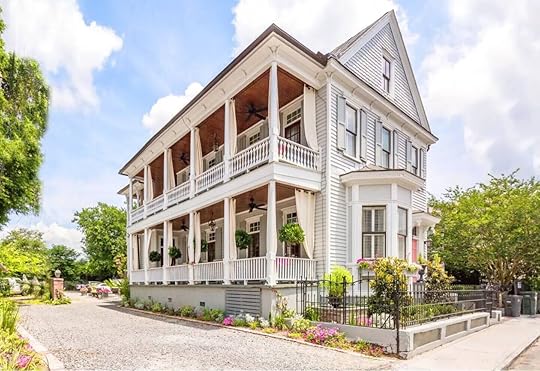
Photo: Airbnb

Photo: Airbnb

Photo: Airbnb

Photo: Airbnb
For a larger group looking to enjoy Charleston in style, this elegant apartment offers a variety of amenities with a great location. This stay is in historic downtown, just a few blocks from King Street. Made up of two units, the apartments are connected by an interior door, creating a luxury four-bedroom, three-bathroom suite. There’s also an outdoor patio for laughs and bubbles.
Twelve guests, four bedrooms
Price: $818 per night
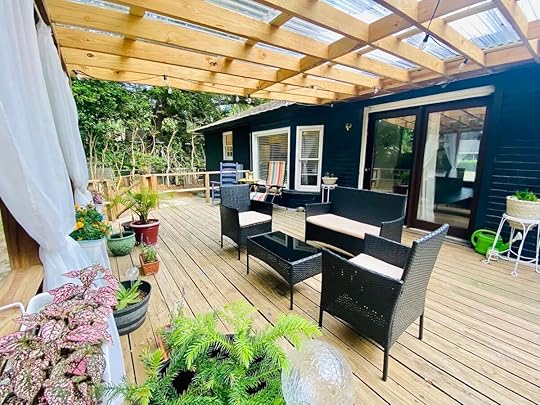
Photo: Airbnb

Photo: Airbnb
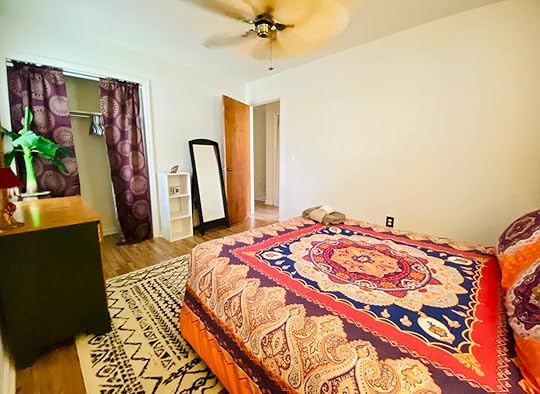
Photo: Airbnb

Photo: Airbnb
This beautifully decorated home in West Ashley offers the perfect place to rest after a day exploring downtown Charleston or soaking up the sun on Folly Beach, both less than 30 minutes away. Located across the Ashley River from downtown Charleston, the West Ashley district also offers plenty of bars and restaurants of its own. The house sleeps eight, and its full patio is sure to be the perfect place for afternoon cocktails or party games.
Eight guests, three bedrooms
Price: $475 per night
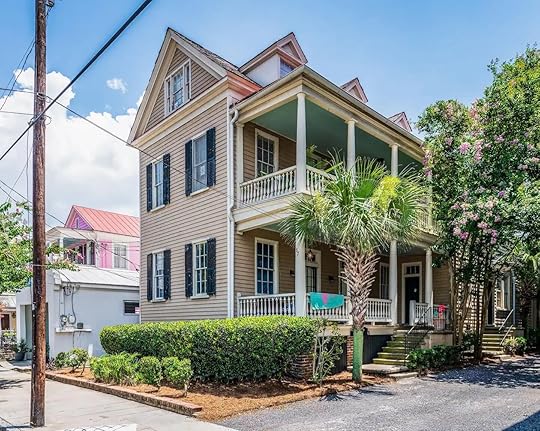
Photo: Airbnb

Photo: Airbnb

Photo: Airbnb

Photo: Airbnb
This house in the Cannonborough/Elliotborough district is the perfect stay for a group of foodie bachelorettes. Ten of the city’s most well-known restaurants are located in the district, not to mention more further south on the peninsula. Regardless of where you choose to dine, the home’s location near King Street is perfect for experiencing the town without the street noise from traffic and nightlife.
Five guests, two bedrooms
Price: $216 per night
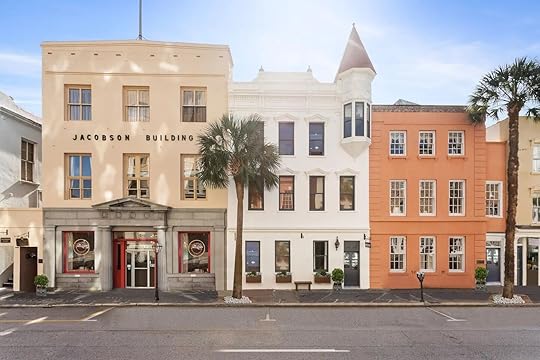
Photo: Airbnb

Photo: Airbnb
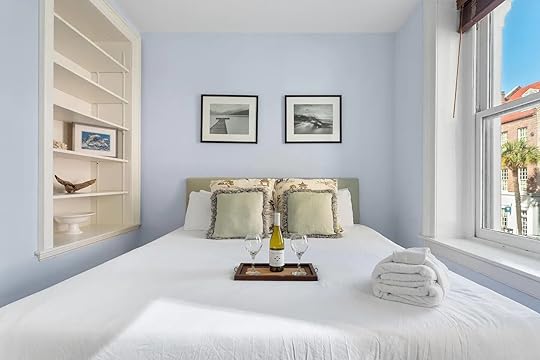
Photo: Airbnb

Photo: Airbnb
Just two blocks from Charleston’s iconic Rainbow Row, this second-floor condo suitable for for five guests has an almost unbeatable location for exploring Charleston’s historic district. The stay is also a quick walk from Waterfront Park, the perfect place to soak up the sunshine within view of the river and some of the city’s most beautiful historic homes.
Five guests, two bedrooms
Price: $530 per night
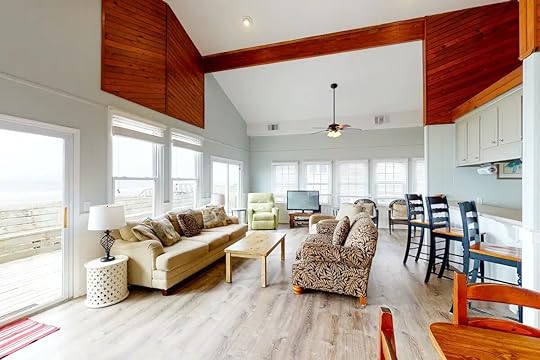
Photo: Airbnb
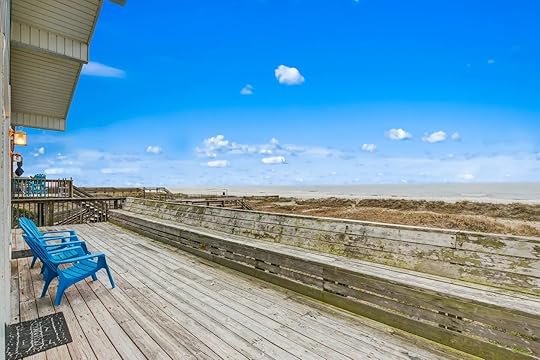
Photo: Airbnb
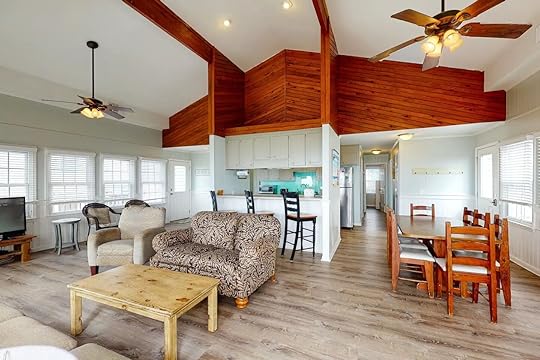
Photo: Airbnb
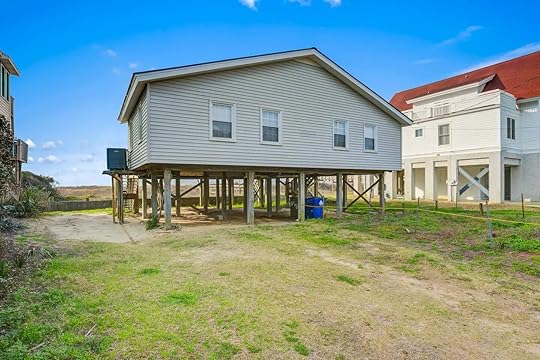
Photo: Airbnb
For a group who’d prefer to spend their days lounging on the beach, this beachfront home on Folly Beach won’t disappoint. With a large living space and porch, the house offers the perfect space for catching up and relaxing. After a day on the beach, head to downtown Charleston (only 11 miles away) for dinner and drinks. Parking won’t be an issue here, with room in the driveway for up to six vehicles.
Nine guests, five bedrooms
Price: $377 per night

Photo: Airbnb

Photo: Airbnb
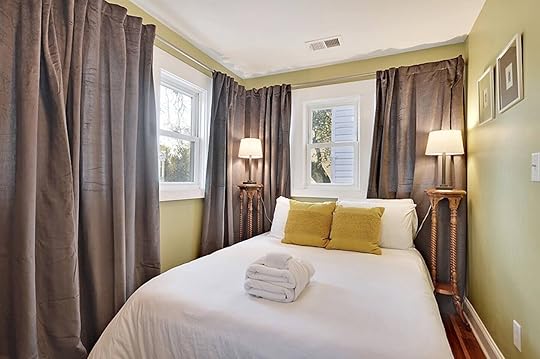
Photo: Airbnb
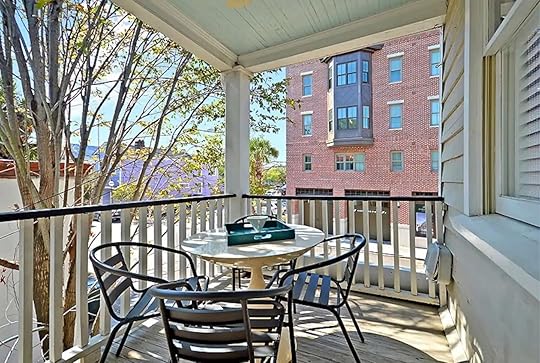
Photo: Airbnb
Just one block away from Upper King Street, this seven-guest apartment offers a place to explore Charleston’s historic district for a lower price than stays further south on the peninsula. The apartment has a lot of character, with exposed beams and open kitchen shelving, not to mention it’s within walking distance to bars and clubs.
Seven guests, two bedrooms
Price: $287 per night
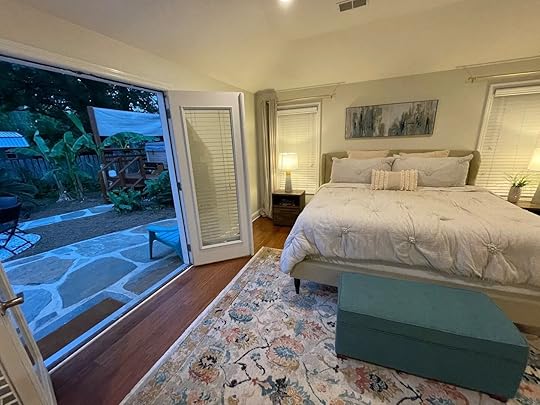
Photo: Airbnb
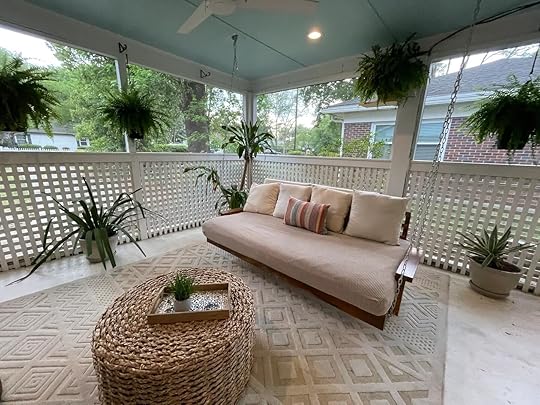
Photo: Airbnb
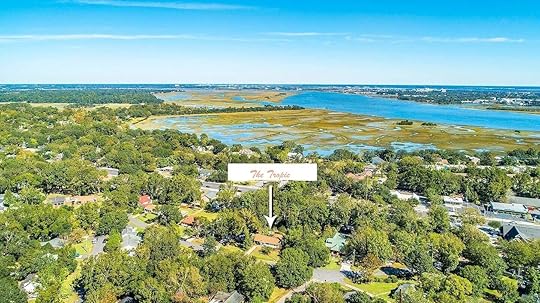
Photo: Airbnb

Photo: Airbnb
This colorful Avondale home can accommodate up to nine guests and includes a large porch for socializing and a hot tub in the backyard. Avondale, another neighborhood located across the river from downtown Charleston, is sometimes called the downtown of West Ashley. Shops and restaurants are within walking distance, and downtown and beaches are nearby.
Nine guests, four bedrooms
Price: $600 per night

Photo: Airbnb
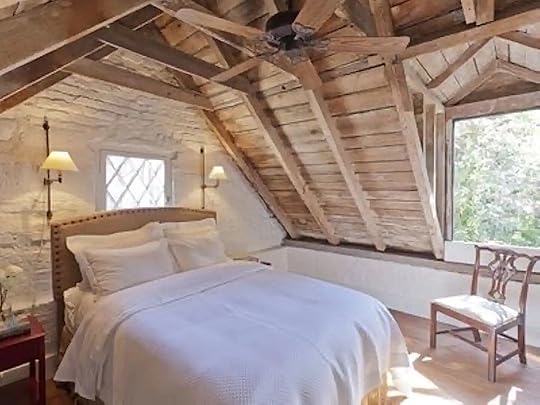
Photo: Airbnb
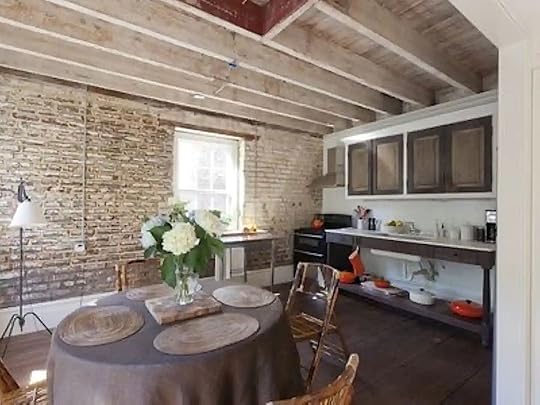
Photo: Airbnb
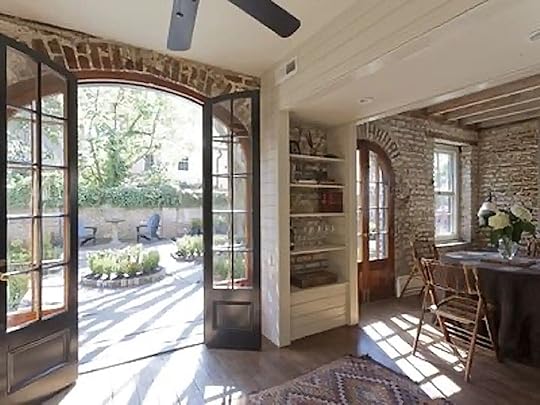
Photo: Airbnb
If you want to stay on the main peninsula, but don’t want to splurge on a stay closer to downtown, this historic house in Harleston Village is the perfect fit. Harleston Village is home to the College of Charleston campus, as well as a number of historic homes and churches. The property offers the vibe of the Old South with modern amenities and a location that is super convenient to everything from restaraunts to bars to shopping, and even the beach.
Six guests, two bedrooms
Price: $600 per night

Photo: Airbnb

Photo: Airbnb
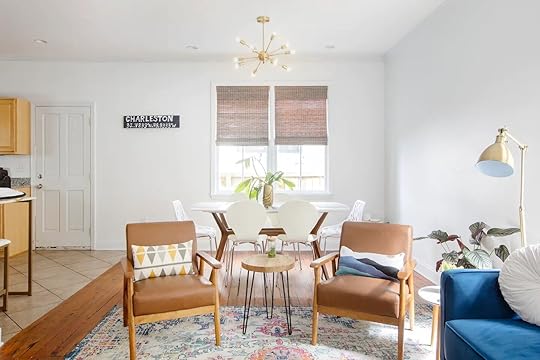
Photo: Airbnb
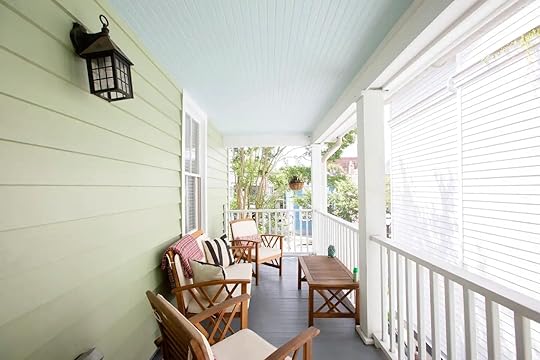
Photo: Airbnb
If you’re worried about having enough space to get ready for a night out, this house is your answer. This stay in the Cannonborough/Elliotborough district along Upper King Street sleeps nine guests, with four queen size beds and three full baths. The house also has a parking space for a car and lists other parking areas in its description. 
Nine guests, three bedrooms
Price: $784 per night
16 Things To See and Do on a Weekend Getaway To the Finger Lakes
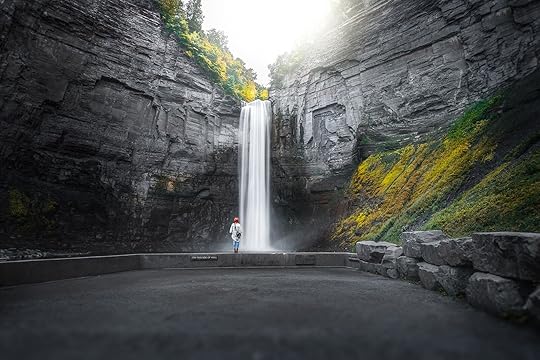
Most people already familiar with wine know that the Finger Lakes, in upstate New York, is one of the best places in the United States to go wine tasting. But what people might not know about this region is that it offers abundant opportunities for outdoor adventure and exploration of sites central to American history and progress.
The region encompasses Ithaca, Seneca Falls, Geneva, and Rochester, among many other small towns, as those 11 lakes that it’s named for. Every type of explorer looking to spend warmer weather days outside and in nature will find something to do here: There are parks galore, many of them lake-front, for casual strolls and picnicking, forested hiking trails, cascading waterfalls nestled within the bigger state parks, and crystal clear swimming holes. Pack the family into the car because there is enough to do outdoors in the Finger Lakes, New York to fill a whole weekend of discovery and play.
Once your family has dried off in the sun or replaced their hiking boots with more casual attire, head to one of the Finger Lakes historical sites to learn about farm life in the 19th century, the suffragette movement, and even the Civil War. There’s just so much to do in the Finger Lakes, there’s so much to learn.
The car ride might not be short – it’s about a 4.5-hour drive from New York City to Seneca Lake, for instance – but it’s worth planning a weekend getaway to this pastoral region, where there is much more to do than drink wine. You can spend the weekend hiking and touring museums, then get back to the city feeling refreshed. Here are 16 stops in the Finger Lakes, New York to add to your itinerary.
Where to swim and hike in the Finger Lakes, New YorkTaughannock Falls State Park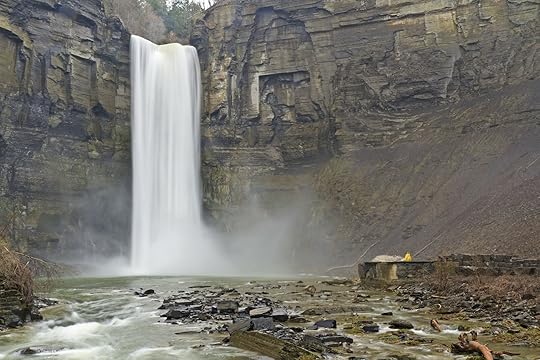
Photo: Colin D. Young/Shutterstock
This 750-acre state park in a town called Ulysses culminates in the magnificent Taughannock Falls. Misty water cascades 215 feet down the rocky cliffside, and while this is a must-see attraction for day-trippers to the Finger Lakes, the state park also offers a nearby beach, campground, a multitude of hiking trails, and a marina for boating.
Sandy Bottom Nature TrailLocated near Honeoye Lake the Sandy Bottom Nature Trail runs through grassy wetlands. Here, visitors, who traverse a raised boardwalk, can spot mink, muskrat, otter, and frogs. Birding is also a popular activity along the trail. The easy hike is perfect for families, and the trail leads to Sandy Bottom Park Meadow, where deers can frequently be spotted feeding on the tall grass.
Robert H. Treman State Park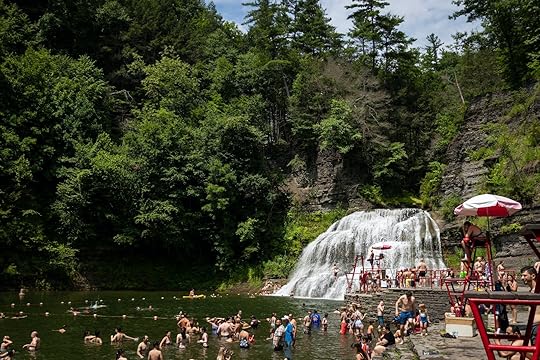
Photo: Benjamin Clapp/Shutterstock
Trails in this state park have ominous names like Lucifer Falls and Devil’s Kitchen, but the gorges and wooded trails make it one of the most family-friendly and popular in the Finger Lakes. A pristine pool beneath Enfield Falls (the park’s lower falls), which serves as a natural swimming hole is attended by a lifeguard in the summer – and surely the biggest draw to this park, so don’t forget your swimsuit.
Rainbow Falls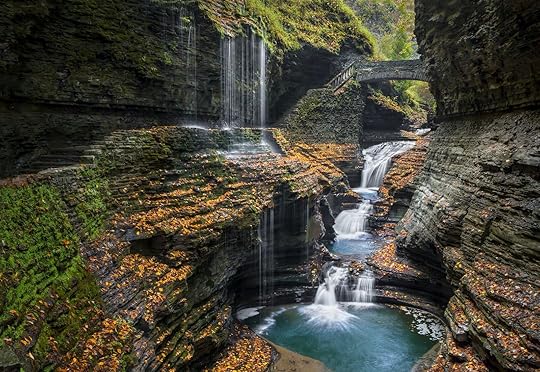
Photo: Kenneth Keifer/Shutterstock
Inside Watkins Glen State Park, hikers will find what is sometimes called the “crown jewel,” of the Finger Lakes region, Rainbow Falls. Following man-made stone staircases along the Glen Creek gorge trail will lead you to nineteen waterfalls falling down the gorge.
Grimes GlenThe site of the oldest fossilized tree in New York State, Grimes Glen is also known for its three majestic waterfalls (the third of which can only be reached by experienced hikers). This is a great spot not just for hiking but swimming, too: Pools of cool water have formed throughout Grimes Creek, where hikers like to soak.
Cornell Botanic Gardens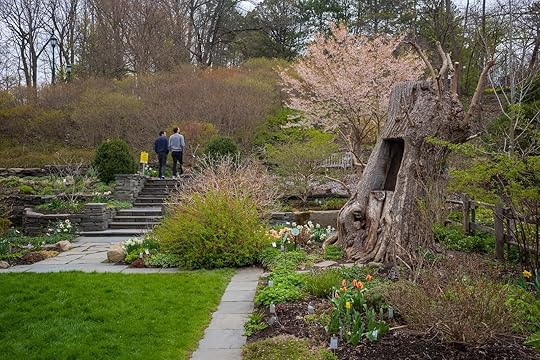
Photo: JWCohen/Shutterstock
Outdoor gardens and woodland trails make the Cornell Botanic Gardens a must-visit destination for a relaxing stroll through nature. The gardens alone pathways lined with a diverse fauna, from herbs, wildflowers, pine trees, tulips, rhododendrons, and much more, but there are also 11 more “natural areas” scattered throughout the Cornell campus that are worth exploring.
Where to experience history in the Finger Lakes, New YorkHarriet Tubman National Historical Park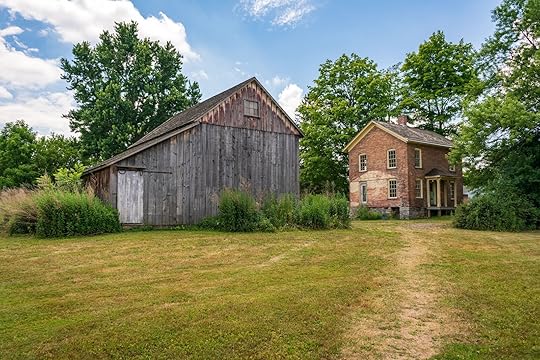
Photo: Zack Frank/Shutterstock
Located on the site of Tubman’s family home and farm, visiting this national park is a powerful and moving experience, as well as an informative one. The Thompson Memorial African Methodist Episcopal Zion Church, which Tubman raised the money to build, is also located within the park. Although her home is only visible from the outside, the Tubman Home for the Aged, where she lived until her death, is open for guided tours.
Historic GenevaThis town is a shrine to America’s colonial past. If you’re a history buff, it’s worth stopping by the Geneva History Museum which features historically accurate furnished rooms from the 19th century. Then, at nearby Rose Hill Mansion, learn about how the 20-room home and former working farm survived this tumultuous period through the letters, photographs, and diaries of the Swan family.
Sonnenberg Gardens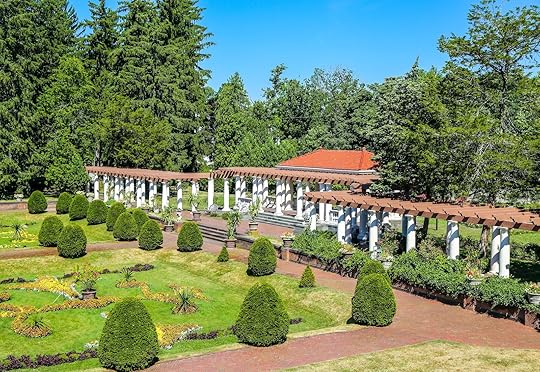
Photo: Leonard Zhukovsky/Shutterstock
A Queen Anne Victorian-style mansion, one of the few left in the country, and pristinely manicured gardens draw visitors from all over the country to Sonnenberg. There are 13 different gardens to explore on the property – some inspired by Japanese and Italian design. A dilapidated former bathhouse, once lined with blue tile, is also open to visitors – as are three floors of the mansion, including the original residents’ master bedroom, dining room, and library.
Women’s Rights National Historical Park
Photo: Alizada Studios/Shutterstock
This national park marks the spot where the very first Women’s Rights Convention took place, in Seneca Falls, New York. Here, families can visit four historic buildings, including the Wesleyan Chapel, where the convention took place, and the home of legendary suffragette Elizabeth Cady Stanton.
Where to shop and eat in the Finger Lakes, New York
Photo: Windmill Farm and Craft Market
Doug’s Fish FryThis cozy restaurant in Skaneateles specializes in fried fish and hot dogs. The fried fish sandwich is especially good, and tartar sauce and coleslaw are all by hand, in-house.
Nick Tahou’s HotsHome of the legendary, have-to-try-it-for-yourself-to-believe-it Garbage Plate – either cheeseburger, hamburger, or Italian sausages mixed together with macaroni salad, French fries, baked beans, and onions and pilled well together on the same plate – Nick Tahou’s Hots is a Finger Lakes institution. Well known as a hangover cure, Garbage Plates are served alongside milkshakes and fries at this tiny Rochester outpost.
The Windmill Farm & Craft MarketLocated near Penn Yann, this combination indoor and outdoor market houses around 175 shops. You could really spend your entire day wandering around Windmill, sampling local wines, shopping for handmade garden gnomes and birdhouses, and snacking on nearly everything you can imagine from kettle corn to frozen custard to pierogies and barbecue.
Schaller’sThough Schaller’s is technically a chain (there are three locations) people from the Finger Lakes will tell you why it’s so beloved: Simple but delicious burgers and hotdogs and thick shakes in a classic drive through atmosphere make for a family-friendly, inexpensive but satisfying meal.
Lincoln Hill FarmsNestled within the idyllic countryside outside Rochester, Lincoln Hill Farms offers platters of barbecue chicken, pulled pork, and roasted pork from its smokehouse. The farm is a popular wedding venue too, but also hosts events like concerts and its available for glamping stays, too. 
Miami LGBTQ travel guide
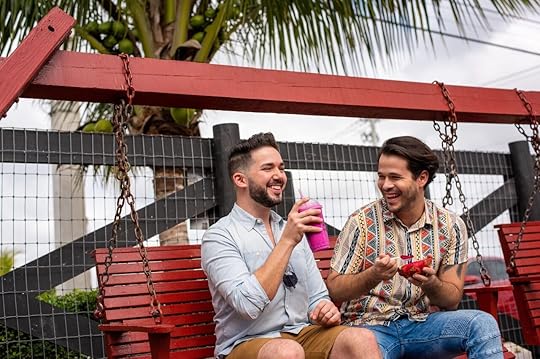
Glass skyscrapers rise from electric blue waters, neon-pink lights illuminate Art Deco masterpieces, and the parties only end once the South Florida sun rises over the Atlantic shoreline’s soft bed of white sand. This is Miami — a multicultural melting pot with a long history as a gaycation destination. Aside from must-see spots like glitzy-gay South Beach and artsy-fartsy Wynwood, Miami throws a gajillion LGBTQ+ events throughout the year where crowds flock to gay Miami.
A brief history of LGBTQ+ scene in MiamiThe best gay bars by naighborhoodGay beaches in MiamiThe best LGBTQ+ events and partiesWhere to stay in MiamiA brief history of LGBTQ+ scene in Miami
Photo: Miami and Beaches
The fight for LGBTQ+ equality in Miami has often mirrored the wild waves of hurricane season.
Queer communities in the 1950s and 1960s found solace at bars and on beaches, but were subject to frequent police raids and arrests. Five years after the city’s first LGBTQ+ Pride-related activities in 1972, local anti-gay activist Anita Bryant’s national “Save Our Children” campaign smeared homosexuals as a danger to children. She swayed public opinion to vote against LGBTQ+ anti-discrimination laws. In 1980, The Mariel boatlift brought thousands of LGBTQ+ Cubans seeking asylum to the shores of Miami. Sadly, the coming AIDS epidemic would decimate their numbers along with the rest of Miami’s gay community.
In the late 1990s, things began looking up. Miami banned discrimination based on sexual identity in 1998. Gender identity discrimination finally followed in 2014. The city’s first sanctioned Pride parade happened in 2009. In 2015, Miami-Dade County became the first place in Florida to issue a same-sex marriage license.
The city’s most exciting queer history predates all these landmark moments by decades. It took place in 1937 at La Paloma, a nightclub in what is now Miami-Dade County. La Paloma, known for female impersonators, lude comedy acts, and striptease performances was one of the earliest LGBTQ+ outposts in South Florida. It was also a vulnerable target for anti-gay extremists. On November 15, nearly 200 members of the KKK stormed the bar in white hoods. Despite subsequent threats and police raids, La Paloma reopened with a new skit with performers in white robes openly mocking the terrorist organization. This act of resistance is a shining example of Miami’s queer community. When faced with adversity, LGBTQ+ Miamians always know how to bounce back and keep the party going.
The best gay bars in Miami by neighborhoodSouth Beach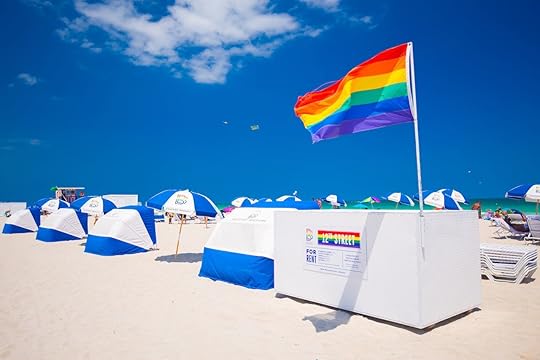
Photo: Mia2you/Shutterstock
In the 1980s and 1990s, the queer community colonized the area between 10th and 15th Street from Ocean Drive to Washington Avenue. Although many LGBTQ+ clubs have shuttered in recent years, South Beach is still the place to stay and play if you’re looking for a gay old time.
It’s also quintessential Miami. With expansive beaches, iconic Art Deco architecture, and clubs that blare music all night long, it’s no wonder South Beach is often the first and only stop for tourists who come to town.
Palace
Photo: Miami and Beaches
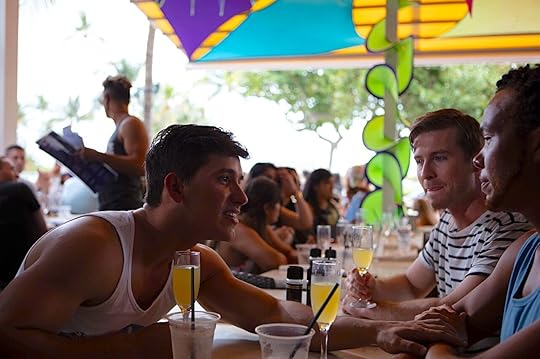
Photo: Miami and Beaches
All hail the royal queens of Ocean Drive. Palace is best known for its Friday — Sunday drag brunch, where you can drink your body weight in mimosas while watching drag performers do death drops from table tops for only $50. If brunch is too ambitious after your all-night shenanigans, don’t worry — you can catch a Palace queen lip-syncing for her life every night of the week. Palace is conveniently near Miami’s 12th Street Gay Beach, a brilliant spot to soak up some midday booze before basking in the sun.
Address: 1052 Ocean Drive
Hotel Gaythering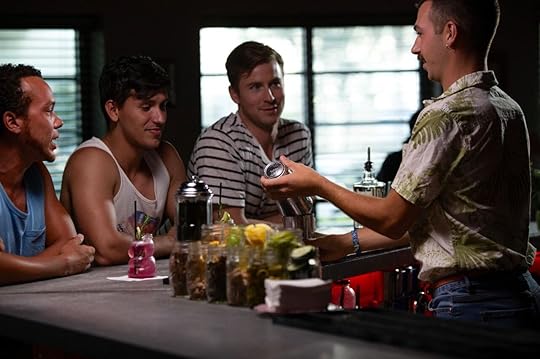
Photo: Miami and Beaches
The Hotel Gaythering is the Swiss Army Knife of gay establishments — it does everything you want it to and then some. The boutique hotel caters to a variety of guests and their needs. It’s a hotel, men’s sauna, and laid-back bar that hosts a series of themed nights (Wednesday’s trivia night actually makes trivia fun). It is even home to Art Gaysel — a show featuring over 30 queer artists during Miami’s annual Art Basel. It’s also an easy 20-minute walk from the majority of LGBTQ+ nightlife between Ocean Drive and Washington Avenue.
Address: 1409 Lincoln Road
CLUB BOiCLUB BOi is a South Beach dance club that attracts a mostly Black and Latinx crowd. The music tends toward hip-hop, reggae, and Latin, which can be a welcome respite from the pop and house music you’ll hear blaring at most other South Beach bars.
Address: 3632 NW 25th Avenue
Wynwood
Photo: susana valera/Shutterstock
Wynwood is Miami’s capital of cool: Colorful murals cover streets lined with contemporary art galleries, boutique shops, trendy restaurants, and some of the city’s slickest bars. Although the outcropping of LGBTQ+-specific nightlife here is limited, this walkable neighborhood is part of the Millennial ideology where all are welcome and included.
Gramps
Photo: Gramps/Facebook
This Wynwood watering hole is hipster-bait for people of all persuasions, but Thursday night’s Double Stubble, a dance party and drag show, is as queer as they come. Even if you don’t make it to this popular LGBTQ+-flavored event, it’s worth checking out Gramps for the reasonably priced food and drink menu. The performance space hosts everything from stand-up comics to drag queen bingo throughout the week. Check the website for an up-to-date show schedule.
Address: 176 NW 24th Street
TwistWith two levels, three dance floors, sevens bars, and zero cover, Twist is the Atlantis Cruise of gay clubs — once you hop on board, you never have to leave. It also holds the distinction of being Miami’s oldest queer club — undoubtedly a success because the club packs a little something for everyone. While the scene here doesn’t heat up until 1:00 AM, you can always find buff go-go boys working up a steam in the Gaiety bar out back.
Address: 1057 Washington Ave, Miami Beach
Wood Tavern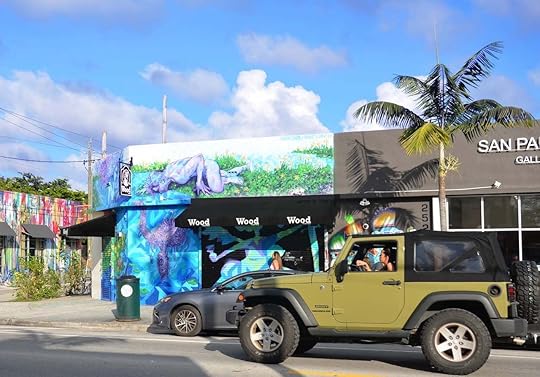
Photo: Wood Tavern
Located across from Wynwood Walls, Miami’s premier street art gallery, this indoor-outdoor bar attracts an artsy and eclectic crowd. Funky murals cover almost every inch of wall space in Wood Tavern, including pieces by graffiti gurus like Os Gemeos, Alexis Diaz, and How & Nosm. While it’s not explicitly LGBTQ+-oriented, you’re bound to bump into a bunch of queer kids shaking their tail feathers underneath the night sky on the massive outdoor dance floor.
Address: 2531 NW 2nd Avenue
Coconut Grove and Little Haiti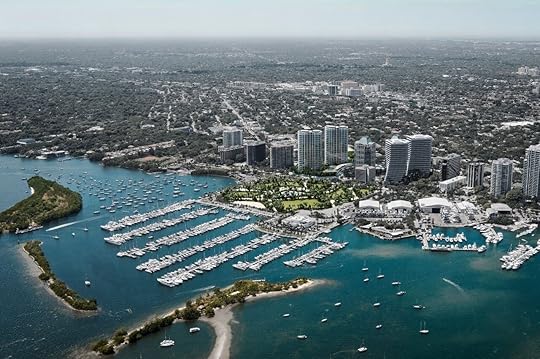
Photo: Miami and Beaches
Although South Beach is by far the biggest gayborhood in South Florida, if you’re hanging out in Coconut Grove, check out Azucar Nightclub and Club Aqua — the city’s only remaining gay bathhouse. Head north to Little Haiti for Jamboree Lounge, a gay neighborhood dive bar that serves wine and beer.
Wilton Manors and Fort Lauderdale
Photo: CrackerClips Stock Media/Shutterstock
It’s impossible to talk about Miami’s LGBTQ+ scene without mentioning that two of America’s most beloved queer destinations are less than an hour’s drive away.
Wilton Manors, a 10-minute trip from downtown Fort Lauderdale, is the epicenter of this queer community. You can choose from a healthy helping of bars along Wilton Drive (The Manor and Hunter’s both draw big weekend crowds), queer-owned restaurants (head to Rosie’s for burgers or lesbian-owned Le Patio for French cuisine), and even gay coffee shops (check out Java Boys or Stork’s). Wilton Manors is also home to the Stonewall National Museum and Archives.
Fort Lauderdale famously caters to a more mature LGBTQ+ community, and Sebastian Street Beach is the unofficial gay hang where these older bronzed beauties like to sunbathe.
Gay beaches in Miami12th Street Beach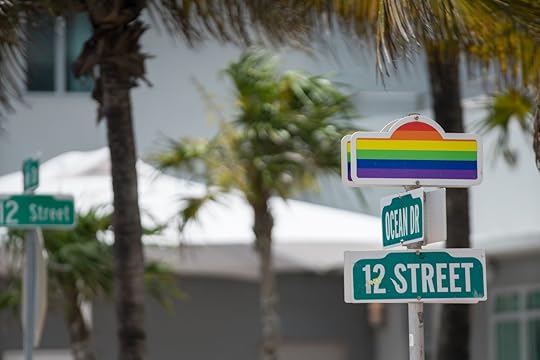
Photo: Felix Mizioznikov/Shutterstock
If your dream is to drown in a sea of teeny speedos, the gay beach at 12th Street is your fantasy come true. To get there, cross the street from the Palace and walk past the bike path that snakes through Lummus Park. You’ll know you’ve arrived once you spot the rainbow flags; you’ll know where to set up your beach towel once you spot the most appealing banana hammocks on display.
Address: 12th Street and Ocean Drive
Haulover Naturist Beach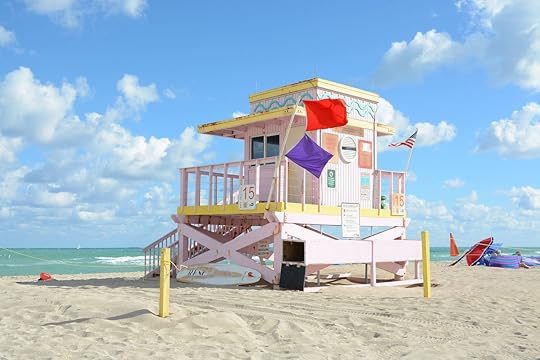
Photo: photravel_ru/Shutterstock
No shirt? No shoes? No problem. Nearly a third of Haulover Park Beach’s 1.5-mile expanse of creamy white-sand is devoted to naturists, making it the largest sanctioned nude beach in the United States. It’s egalitarian sunbathing at its best — both beach bums and business folk strip down to their birthday suits to soak up the Miami sun like lazy lizards. Don’t be surprised to see people of all ages, shapes, sizes, and sexes. Do remember to be respectful — while there’s a gay section, this isn’t a place for hanky panky.
Address: 10800 Collins Avenue
LGBTQ+ events and festivals in MiamiWigwood
Photo: Wigwood/Facebook
Get out your lace fronts, ladies. Wigwood has been celebrating the gender-bending beauty of wigs and those who love to wear them in a weekend-long extravaganza since 2017. The festival, created by local drag celeb Queef Latina, hosts multiple parties throughout the city featuring queer artists, musicians, and some of the most boundary-breaking drag performers in America. Dress to impress.
When: February
SizzleSince its inception in 2002, Sizzle has been serving up Black boy joy to thousands from around the country who gather every Memorial Day Weekend in a celebration of life and liberty. There are pool parties during the day, raves that last late into the night, and at least one takeover of the naturist section at Haulover Beach. Check out the Sizzle Miami website to purchase event packages.
When: May
Gay8 Festival (“Gay Ocho”)
Photo: Gay8 Festival/Facebook
With over 60,000 attendees, Little Havana’s Gay8 Festival is the largest annual Hispanic LGBTQ+ event in the nation. Calle Ocho, Miami’s Southwest 8th Street, shuts down for the festivities to showcase the neighborhood’s unique blend of music, food, and art. Expect everything from wild dance parties in the street, free queer film screenings, and live music.
When: February
Aqua GirlEvery autumn, Miami Beach hosts the largest gay women’s charity event in the country, Aqua Girl. Unlike the boy-centric bashes that take place throughout the year, this female-focused fête caters primarily to lesbian, bi, trans, and nonbinary individuals. As the title suggests, Aqua Girl is all about getting wet. Saturday’s pool party is the main event, though there’s a large helping of parties where you can cut a rug throughout the week. A portion of Aqua Girl’s proceeds goes to The Aqua Foundation for Women, a local LGBTQ+-focused nonprofit.
When: October
Winter Party
Photo: Winter Party Festival/Facebook
What began as a one-night-only beach party in the winter of 1994 is now a six-day music and dance festival attended by nearly 10,000 people from around the world. Miami Beach hosts over 20 events where you can dance until you drop all week long. A portion of the proceeds goes to the National LGBTQ+ task force, helping to support 80 nonprofit organizations in South Florida.
When: March
Miami Beach Pride
Photo: Gregory Reed/Shutterstock
Miami Beach Pride festivities begin the first week of April, starting in recent years with a memorial honoring the victims of Orlando’s Pulse nightclub massacre. During the event, entitled Pride Lights the Night, buildings throughout Miami-Dade County decorate with rainbow-colored lights in a sign of solidarity. Along with the many parties, drag competitions, and community mixers that take place during the week, be sure to check out the weekend-long Pride Festival in Lummus Park. With two stages featuring dozens of live performances, 125 vendor booths, and a bunch of family-friendly activities, this raucous daytime shindig is the weekend’s most popular. The celebrations culminate in Sunday’s Pride Parade along Ocean Drive. Expect dozens of spectacular floats, participants dressed in an array of fantastical costumes, and onlookers dancing down the sidewalks on their way to the beach.
When: April
Where to stay in MiamiWe hope you love the spaces and stays we recommend! Just so you know, Matador may collect a small commission from the links on this page if you decide to book a stay.
The Standard
Photo: The Standard
The Standard is an idyllic place to detox from Miami’s manic party scene. The sleek, spacious rooms come equipped with private terraces and vintage soaking tubs. There’s also a full-service spa where you can relax in a Finnish sauna or Roman waterfall hot tub. When you’re ready to retox, the Lido Bar is a chill spot to grab a cocktail and play some ping pong; the Lazy Sunday Barbecue party at the outdoor infinity pool is a popular event open to the public. While this isn’t technically an LGBTQ+ hotel, its proximity to South Beach makes it close enough to join the fun and far enough away to escape it.
Address: 40 Island Avenue
Hotel Gaythering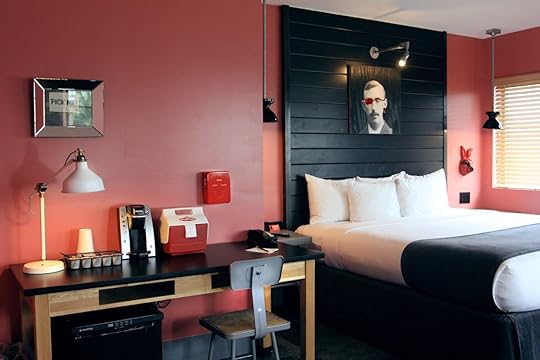
Photo: Hôtel Gaythering/Facebook
South Beach’s exclusively gay hotel is so queer-tastic it had to be listed here twice. The 1958 MiMo-style property has versatile room packages to fit all kinds of budgets. For size queens, try the swanky studios and comfy kings. For those looking to save, the no-frills private units with shared bathrooms are some of the most affordable accommodations in town. As noted before, Hotel Gaythering offers all the amenities you need and attracts all the things you want while on vacation.
Address: 1409 Lincoln Road
The Villa Casa Casuarina (formerly the Versace Mansion)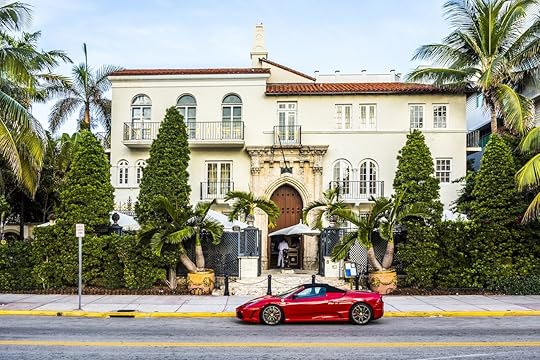
Photo: travelview/Shutterstock
It may seem creepy to walk over the threshold where Gianni Versace was shot to get to your room, but let’s be real — this storied beachfront palace, originally built in 1930 by rich-kid architect Alden Freeman, is fancy AF. If you’ve seen The Assassination of Gianni Versace, you know what I’m talking about.
Every room in this villa is dripping with baroque-style opulence. The soaring prices (over $700 a night) might make you think Ricky Martin will be waiting for you in a tight tennis uniform when you arrive. If you’re looking to be more a voyeur than an overnight guest, book a dinner reservation at the on-site Italian Mediterranean restaurant, Gianni’s.
Address: 1116 Ocean Drive
AxelBeach Miami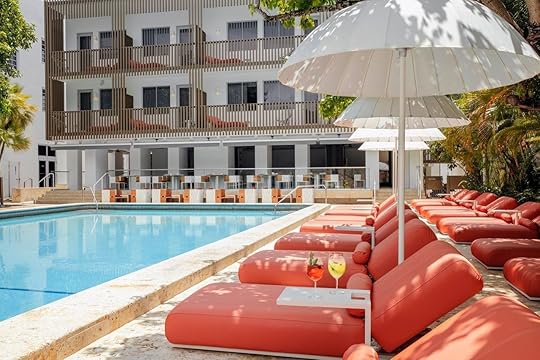
Photo: Axel Hotels/Facebook
This “hetero-friendly” Art Deco hotel is the second gay lodging option in South Beach and is just a few blocks from Miami’s 12th Street beach. Axel Hotels is a trusted queer chain popular in cities such as Barcelona, Ibiza, and Berlin.
Address: 1500 Collins Avenue
If you’d prefer to rent a house or apartment, check out Matador’s comprehensive article on the best Airbnbs in Miami for list of trusted rentals. 
Happening Now: Save Up To 30% on Outdoor Gear at the 2022 REI Anniversary Sale

The 2022 REI Anniversary Sale runs from May 20 through May 30. You can save up to 30 percent on items including tents, sleeping bags, backpacks, clothing, and more. If you’re an REI Coop Member, you’ll get an even bigger discount as you’ll get one coupon for 20 percent off any item plus a second coupon for 20 percent off an REI Outlet item (they’re both tied to your account already).
These are the items we’re most excited about (or check out the full list of items on sale).
We hope you love the REI Anniversary Sale! Just so you know, Matador may collect a small commission from the links on this page if you decide to book a stay. Listed prices are accurate as of the time of publication.
20 percent off: hiking boots to last a decade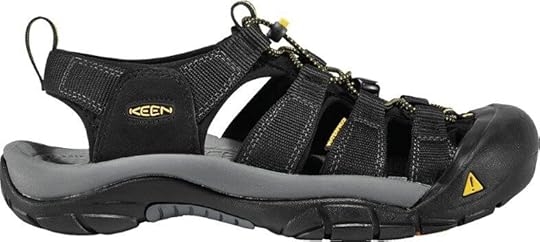
Photo: REI
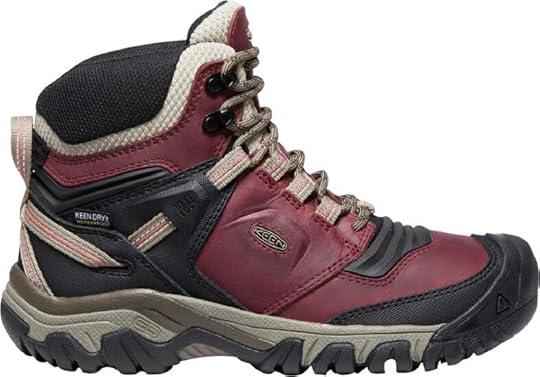
Photo: REI

Photo: REI
One of the biggest deals at this year’s REI Anniversary Sale is 20 percent off all Keen footwear. If you have a river trip, beach vacation, or need a great new pair of sandals or hiking boots, this is the time to re-up. We particularly love the Newport river sandals ($103 during sale, reg. $129.95), available in women’s, men’s, and kids’ varieties in multiple styles and colors. Matador editor Tim Wenger has worn his Newports on several multi-day river expeditions and they perform perfectly in-raft, in-water, and on the beach. We’ve also come to love the Ridge Flex women’s hiking boot and Targhee men’s hiking boot, both of which you can nab right now for about $150.
30 percent off: a tent that’s already half the price of its competition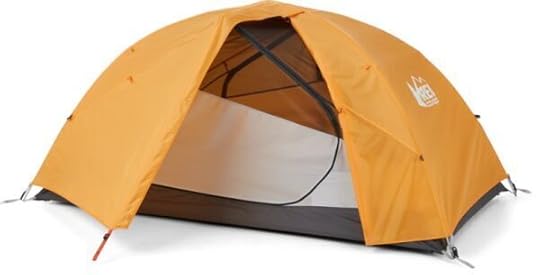
Photo: REI
REI Coop’s iconic Trail Hut Tent, available in a two– or four-person version, is the best deal on tents at this year’s REI Anniversary Sale. It’s compact and light enough to fit in a standard backpacking pack without adding much weight, but spacious enough for campers and gear (because no one likes to leave their pack outside in the rain). The Trail Hut is durable and competent, without the flashiness or added features (read: added weight) of higher-end or sport-specific tents. Grab one now for $140 (two-person) or $210 (four-person). It’s less than half the price of comparable tents from established outdoor brands.
25 percent off: a super-packable hammock and straps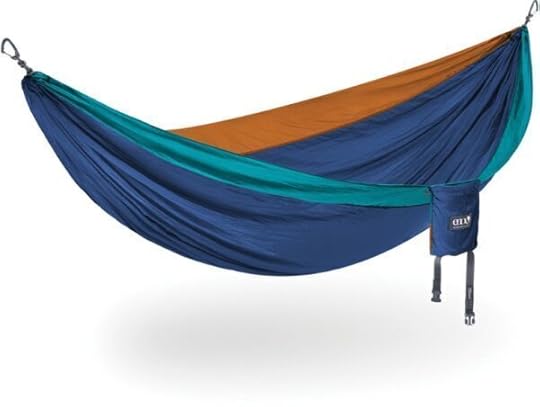
Photo: REI
Eno’s DoubleNest Hammock is editor Tim Wenger’s long-running go-to for a backcountry hammock. The packs into its own attached storage bag and sets up in minutes from a pair of trees, poles, or another thin-but-vertical object. Weighing just over one pound, you can add a lot of comfort to your camping or backpacking setup (or even your yard) without having to jettison that cooking pot. And as a bonus, the new version of the DoubleNest even comes with a cupholder so you can lounge with your beverage of choice. Grab an Eno DoubleNest hammock ($56.25) and a pair of Atlas Straps ($29.95) to better suspend the hammock in the wild.
30 percent off: portable outdoor furniture for comfortable camping
Photo: REI

Photo: REI

Photo: REI
Whether you’re car camping this summer or just need to spruce up your patio, REI Outward Furniture is the perfect addition, especially at 30 percent off. This is the best deal of the year on popular items like the Outward Classic Low Lawn Chair and the Outward Padded Bench. Toss in an Outward Side Table, and you effectively have an entire living room for the campsite.
25 percent off: four-season down jackets and fleece
Photo: REI

Photo: REI
Summer evenings can be chilly if you’re camping at high elevations (or just outdoors in a strong wind). The Cotopaxi Abrazo fleece counteracts that chill by keeping you warm and dry, and brightly stylish to boot. The Abrazo comes in half-zip or full-zip options with two pockets for your paws. It’s super versatile since you can wear it year round — just use it as an insulative layer under your thinner ski shells come winter. For under $80, that’s a heck of a deal.
Also, this is the time to grab that puffy jacket you’ve been eyeing for next winter. Cotopaxi’s robust line of Fuego down jackets are 25 percent off during the REI Anniversary Sale, as well. And the brand is known for being an industry-leader in both environmental sustainability and social justice.
25 percent off: water bottles you can drop off a cliff
Photo: REI
A water bottle that keeps your drink cold for hours, or even days, is exactly what summer calls for. All HydroFlask water bottles are 25 percent off during the REI Anniversary Sale, which can save you as much as $25. Stainless steel, eco-friendly construction and design, and leak-proof lids are just a few of the reasons why HydroFlask bottles are the go-to for Matador’s outdoor team. They’re also ridiculously durable, and HydroFlask supports Parks For All, which works to increase exposure to wildlands for marginalized groups traditionally left out of outdoor recreation.
25 percent off: the perfect daypack for every hike
Photo: REI

Photo: REI
Two of Osprey’s best-selling packs — the Talon (men’s) and Tempest (women’s) are 25 percent off during the sale and will run you just $101 each. Each is the perfect hiking daypack with an internal frame and 20 liters of capacity. Choose between 22,- 33-, and 44-liter varieties on the Talon, and 18-, 20-, 30-, 34-, and 40-liter options on the Tempest.

More like thisBackpackingThe Ultimate Summer Backpacking Gear Guide
REI’s Anniversary Sale 2022 Saves You Up To 30% on Top Outdoor Brands

The 2022 REI Anniversary Sale runs from May 20 through May 30. You can save up to 30 percent on items including tents, sleeping bags, backpacks, clothing, and more. If you’re an REI Coop Member, you’ll get an even bigger discount as you’ll get one coupon for 20 percent off any item plus a second coupon for 20 percent off an REI Outlet item (they’re both tied to your account already).
These are the items we’re most excited about (or check out the full list of items on sale).
We hope you love the REI Anniversary Sale! Just so you know, Matador may collect a small commission from the links on this page if you decide to book a stay. Listed prices are accurate as of the time of publication.
20 percent off: hiking boots to last a decade
Photo: REI

Photo: REI

Photo: REI
One of the biggest deals at this year’s REI Anniversary Sale is 20 percent off all Keen footwear. If you have a river trip, beach vacation, or need a great new pair of sandals or hiking boots, this is the time to re-up. We particularly love the Newport river sandals ($103 during sale, reg. $129.95), available in women’s, men’s, and kids’ varieties in multiple styles and colors. Matador editor Tim Wenger has worn his Newports on several multi-day river expeditions and they perform perfectly in-raft, in-water, and on the beach. We’ve also come to love the Ridge Flex women’s hiking boot and Targhee men’s hiking boot, both of which you can nab right now for about $150.
30 percent off: a tent that’s already half the price of its competition
Photo: REI
REI Coop’s iconic Trail Hut Tent, available in a two– or four-person version, is the best deal on tents at this year’s REI Anniversary Sale. It’s compact and light enough to fit in a standard backpacking pack without adding much weight, but spacious enough for campers and gear (because no one likes to leave their pack outside in the rain). The Trail Hut is durable and competent, without the flashiness or added features (read: added weight) of higher-end or sport-specific tents. Grab one now for $140 (two-person) or $210 (four-person). It’s less than half the price of comparable tents from established outdoor brands.
25 percent off: a super-packable hammock and straps
Photo: REI
Eno’s DoubleNest Hammock is editor Tim Wenger’s long-running go-to for a backcountry hammock. The packs into its own attached storage bag and sets up in minutes from a pair of trees, poles, or another thin-but-vertical object. Weighing just over one pound, you can add a lot of comfort to your camping or backpacking setup (or even your yard) without having to jettison that cooking pot. And as a bonus, the new version of the DoubleNest even comes with a cupholder so you can lounge with your beverage of choice. Grab an Eno DoubleNest hammock ($56.25) and a pair of Atlas Straps ($29.95) to better suspend the hammock in the wild.
30 percent off: portable outdoor furniture for comfortable camping
Photo: REI

Photo: REI

Photo: REI
Whether you’re car camping this summer or just need to spruce up your patio, REI Outward Furniture is the perfect addition, especially at 30 percent off. This is the best deal of the year on popular items like the Outward Classic Low Lawn Chair and the Outward Padded Bench. Toss in an Outward Side Table, and you effectively have an entire living room for the campsite.
25 percent off: four-season down jackets and fleece
Photo: REI

Photo: REI
Summer evenings can be chilly if you’re camping at high elevations (or just outdoors in a strong wind). The Cotopaxi Abrazo fleece counteracts that chill by keeping you warm and dry, and brightly stylish to boot. The Abrazo comes in half-zip or full-zip options with two pockets for your paws. It’s super versatile since you can wear it year round — just use it as an insulative layer under your thinner ski shells come winter. For under $80, that’s a heck of a deal.
Also, this is the time to grab that puffy jacket you’ve been eyeing for next winter. Cotopaxi’s robust line of Fuego down jackets are 25 percent off during the REI Anniversary Sale, as well. And the brand is known for being an industry-leader in both environmental sustainability and social justice.
25 percent off: water bottles you can drop off a cliff
Photo: REI
A water bottle that keeps your drink cold for hours, or even days, is exactly what summer calls for. All HydroFlask water bottles are 25 percent off during the REI Anniversary Sale, which can save you as much as $25. Stainless steel, eco-friendly construction and design, and leak-proof lids are just a few of the reasons why HydroFlask bottles are the go-to for Matador’s outdoor team. They’re also ridiculously durable, and HydroFlask supports Parks For All, which works to increase exposure to wildlands for marginalized groups traditionally left out of outdoor recreation.
25 percent off: the perfect daypack for every hike
Photo: REI

Photo: REI
Two of Osprey’s best-selling packs — the Talon (men’s) and Tempest (women’s) are 25 percent off during the sale and will run you just $101 each. Each is the perfect hiking daypack with an internal frame and 20 liters of capacity. Choose between 22,- 33-, and 44-liter varieties on the Talon, and 18-, 20-, 30-, 34-, and 40-liter options on the Tempest.

More like thisBackpackingThe Ultimate Summer Backpacking Gear Guide
May 19, 2022
The 10 Most Wish-Listed Airbnbs in the US This Summer Will Inspire You To Get Out in Nature

We hope you love the spaces we recommend! Just so you know, Matador may collect a small commission from the links on this page if you decide to book a stay.
Sure, a luxurious hotel stay can be exactly what you need. But if you’re looking for a stay full of adventure, booking a remote Airbnb is a great way to find a unique stay. In the last few weeks, Airbnb announced some significant new features to find your next stay. Users can now search for their perfect stay using 56 categories and be comforted by Airbnb’s new Air Cover policy that grants peace of mind when booking. And now that you’re ready to begin your search, Airbnb has rounded up the top 10 most wish-listed Airbnbs in the US.
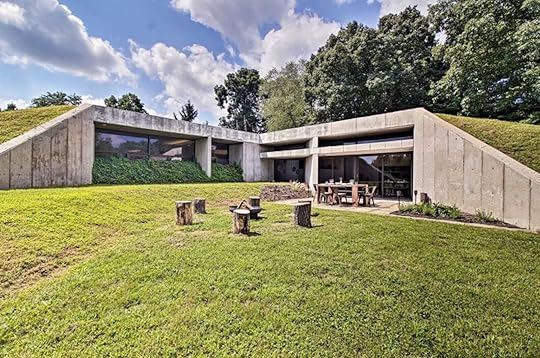
Photo: Airbnb
The third most wish-listed stay is the Earthhouse Retreat in Springfield, Missouri. This three-bed, three-bath home sleeps eight and is the epitome of modern. There’s plenty of natural life around the area while the architecture will have you settling in. Guests can enjoy the spacious yard and fire pit, plus a patio with a dining table that seats six, a propane grill, and a garden.

Photo: Iwan Baan / Airbnb
The second most wish-listed stay is the Architectural wonder in Rhinebeck, New York. This stunning home in the woods hosts four people with three beds and two baths. The eco-friendly stay is solar operated on 30 acres of land, and the house is geometrically fascinating both inside and out.
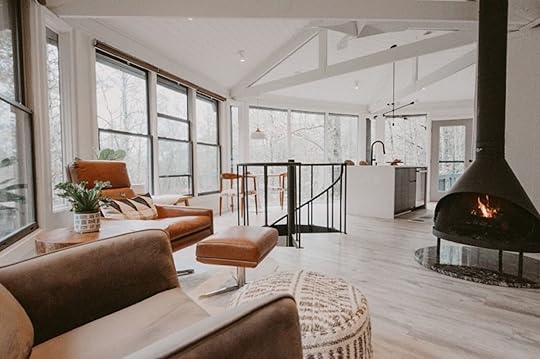
Photo: Ashley Schott / Airbnb
And the number one most wish-listed stay is the Glass Treehouse in North Carolina. This two-person stay is perfect for romance with a background landscape of mountains and waterfalls. The home blurs the lines of indoor and outdoor living with lots of interactions with nature throughout your stay. Keep things hot by the fire pit and steamy inside thanks to a private hot tub.
The 10 most wishlisted AirbnbsGlass Treehouse Modern Luxe Romantic Getaway in Banner Elk, North CarolinaArchitectural wonder in the woods in Rhinebeck, New YorkUnique Earthouse Retreat with Spring-Fed Creek in Springfield, MissouriDomeland: Off-grid Adobe Dome near Big Bend in Terlingua, TexasTreeLoft at BaseCamp in Perryville, MissouriLovely Treehouse in the Woods next to Stream in Hardwick, VermontCherry Treesort “Big Nick” in China Grove, North CarolinaCharming Wood-roof Simple Survival Earthship in El Prado, New MexicoDunlap Hollow A-Frame in Rockbridge, OhioCrystal Peak Lookout in Fernwood, IdahoBook any of these stays, and you’re bound never to want to leave. 
The 6 Best Great Smoky Mountains Waterfalls and Swimming Holes
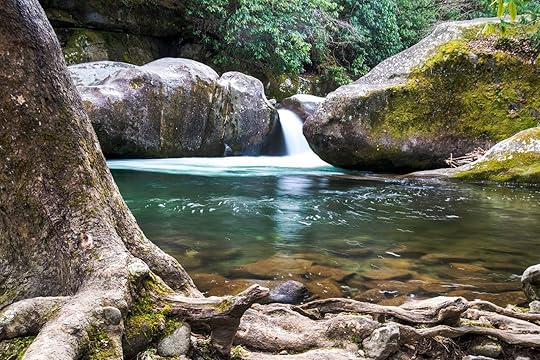
Shared by North Carolina and Tennessee, Great Smoky Mountains National Park is anchored by one of the oldest mountain ranges on earth. As a peak-rippled portion of the extensive Appalachian chain, the Great Smoky Mountains are home to a staggering array of flora and fauna scattered between pine, spruce, and fir forests, among others. And they’re all fed by generous rainfall.
In fact, the Smokies have the highest annual rainfall in the southeastern United States, with higher elevations receiving more than 85 inches every year. However, most of the range’s rain occurs as mist, lending the Great Smoky Mountains their nickname. The amalgamation of altitude and precipitation also makes the Smokies exceptionally biodiverse, earning the national park designations as both a UNESCO World Heritage Site and an International Biosphere Reserve.
The combination of elevation and rainfall also make the Great Smoky Mountain waterfalls numerous and varied, especially with more than 2,100 miles of streams garlanding the national park. However, the rain/elevation combo can also create hazardous trail conditions for hikers, especially along waterways. So before heading out, pack appropriate footwear and check the park’s daily weather advisory – especially during spring and summer, the rainiest seasons in the Smokies.
Thanks to more than 800 miles of marked trails, including a 70-mile stretch of the Appalachian Trail, there’s a lot of mileage to explore. To make it easy, start with these six hikes to Great Smoky Mountains waterfalls for stunning natural sights and some gorgeous swimming holes.
Abrams Falls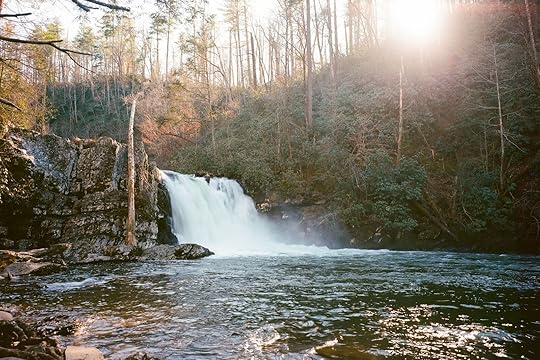
Photo: Trent Carmichael/Shutterstock
Distance: 5.5 milesElevation gain: +/- 630 feetDifficulty: ModerateAbrams Falls might not be the tallest of the Great Smoky Mountains waterfalls, but the burly cascade packs a visual punch, plummeting about 20 feet into a waiting plunge pool. There are several routes to the falls, but the five-mile, out-and-back hike from the Cades Cove Loop Road trailhead is a manageable option for day-hikers.
En route to the falls, the Abrams Creek Trail threads a stream-laced landscape, weaving through mixed hardwood forests and groves of streamside rhododendron. There are a few minor stream crossings of offshoots of Abrams Creek, so keep an eye out for spots to stop for a dip along the way to the thundering falls. More information.
Midnight Hole and Mouse Creek Falls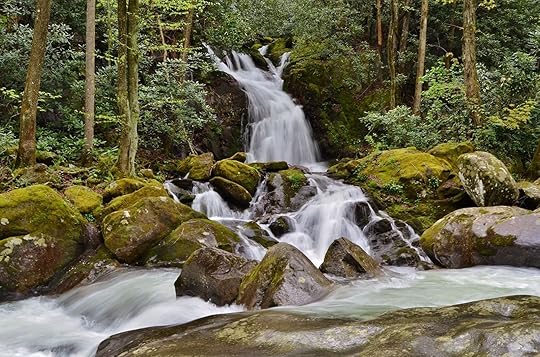
Photo: AllTrails
Distance: 4 milesElevation gain: +/- 540 feetDifficulty: Easy-to-moderateThis hike is actually a twofer, combining a photogenic, natural swimming hole and a secluded waterfall in the Big Creek Valley.
The route starts from the trailhead near the Big Creek Ranger Station and quickly ascends toward the crystalline waters of Big Creek, arriving at the stream after roughly one mile. The trail then parallels the stream until reaching Midnight Hole, the nickname given to the spot where Big Creek spills into a deep pool (about 1.5 miles from the trailhead).
From there, you can continue another .5 miles to a 45-foot-tall Great Smoky Mountains waterfall: Mouse Creek Falls. The cascade is at the intersection of Mouse Creek and Big Creek and stair-steps over turrets of rock to form the multi-tiered falls.
For an overnight excursion, grab a spot at the secluded Big Creek Campground near the trailhead. The tent-only creekside campground is the smallest in the national park, with only 12 sites. More information.
Ramsey Cascades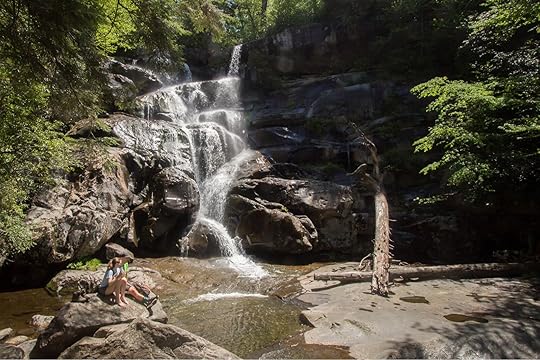
Photo: Theron Stripling III/Shutterstock
Distance: 8.1 milesElevation gain: +/- 2,220 feetDifficulty: ChallengingRamsey Cascades is a sweet reward for sweaty hikers, but the four-mile hike to the tallest Great Smoky Mountains waterfall is grueling. It gains more than 2,000 feet of elevation as it weaves through one of the park’s less-visited areas.
Seek out the lofty waterfall from the marked trailhead for the Ramsey Cascade Trail on Ramsey Prong Road, and be prepared for a full day of hiking that’ll reach more than 4,300 feet in elevation. From the road, the eponymous Ramsey Cascades Trail skirts towering boulders and rockshelters, hugging the banks of the Middle Prong of the Little Pigeon River before climbing to meet Ramsey Prong (a “prong” is a regional term for a small offshoot or stream from a larger river).
For the final two miles, the trail follows Rasmey Prong, rambling through old-growth hardwood forests studded with massive tulip trees, and paralleling a creek pocked with plunge pools. Still, the star of the show is undoubtedly Ramsey Cascade. The postcard-perfect falls marks the end of the route, tumbling over a natural staircase of stacked rocks with a drop of nearly 100 feet. More information.
Mingo Falls
Photo: The American Observer/Shutterstock
Distance: .3 milesElevation gain: +/- 100 feetDifficulty: EasyMingo Falls is within the Qaulla Boundary (an area similar to a reservation, except the land is owned by members of the Eastern Band of Cherokee) along the southeastern edge of the Great Smoky National Park.
It’s easy to reach and one of the loftiest Great Smoky Mountains waterfalls in the park. The hike is short, but there’s a climb – up 161 steps, to be precise. The trail begins along the Raven Fork of the Oconaluftee River, about six miles northeast of the park’s Oconaluftee Visitor Center. For a photogenic view of the falls, follow the steadily uphill Pigeon Creek Trail for just under half a mile to a strategic viewing platform, offering an unobstructed view as Mingo Creek glides through the Raven Fork Gorge and eventually tumbles into a slender, silvery 120-foot-tall ribbon of water. More information.
Rainbow Falls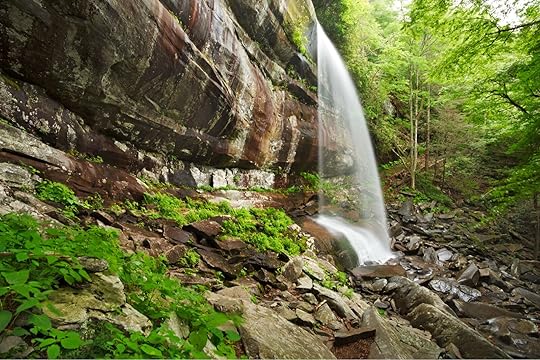
Photo: kurdistan/Shutterstock
Distance: 5.1 milesElevation gain: +/- 1,620 feetDifficulty: Moderate-to-challengingTumbling down the side of 6,593-foot-high Mount LeConte (the third highest peak in the park) is Rainbow Falls, named for a dazzling optical illusion. Usually around mid-morning to late afternoon, when sunlight hits the cascading curtain of water just right, the falls emit kaleidoscopic beams akin to a rainbow.
To catch a glimpse of the polychromatic spectacle, begin at the Rainbow Falls Trailhead in the northeastern portion of the national park just outside Gatlinburg. Follow the Rainbow Falls Trail through the LeConte Valley as it traces the path of LeConte Creek, weaving between boulders and groves of rhododendron and mountain laurel. You’ll reach Rainbow Falls after 2.7 miles.
It’s quite stunning; the calm creek spills over the side of the bluff into a secluded, boulder-cradled rock grotto. While the trip to this waterfall is short at less than three miles, there’s a knee-grating ascent of more than 1,600 feet on the approach. Don’t underestimate it. More information.
The Sinks and Meigs Falls
Photo: Malee Oot
Distance: 6.5 milesElevation gain: +/- 1,330 feetDifficulty: ModerateThe Sinks is one of the few human-made Great Smoky Mountains waterfalls in an area where most are entirely natural. On a bend in the Little River approximately 12 miles west of the park’s Sugarlands Visitor Center, the churning cataract was formed in the late 1800s when loggers used rivers to float downed timber out of the forest. After a violent flood, loggers desperate to clear a logjam in the Little River used dynamite to free the floating timber – and inadvertently created a turbulent flume that eventually slows enough to form rock-buttressed pools. For waterfall-chasers, a visit to the Sinks offers the chance to admire a more secluded cascade (and to scope out leafy swimming holes).
To get to Meigs Falls, hop on the Meigs Creek Trail (it starts near the viewing platform overlooking the Sinks). The route begins with a gradual ascent, climbing out of the Little River Valley and eventually meeting Meigs Creek after about one mile. Be sure to keep an eye out for inviting plunge pools as the footpath parallels its namesake stream. After you reach the creek, it’s another .7 miles to Meigs Creek Falls. The secluded falls tumble about 15 feet into a small lake and offer an impossible-to-miss turnaround point for a quick out-and-back from the Sinks. More information. 
More like thisWhere to StayThe 9 Best Great Smoky Mountains National Park Hotels
California May Get a New State Park With Campgrounds and Kayaking Spots
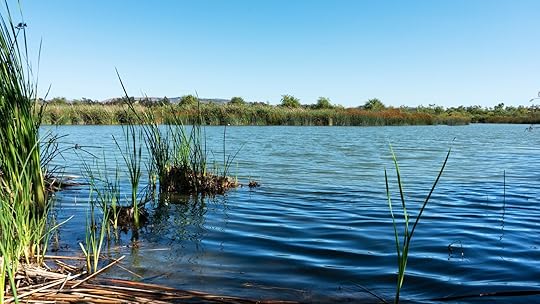
The state with the most state parks in the country is looking to add another, according to KCRA. If California governor Gavin Newsom’s budget for the next year is approved, Dos Rios Reserve, a 20-minute drive from Modesto where the Tuolumne and San Joaquin rivers meet, could become the Golden State’s next state park.
The River Partners organization, which has invested in the area since 2012 by planting native vegetation and trees, has said they will transfer the 2,100-acre site to the state rather than sell the lot. The floodplain restoration lowers flood risk and encourages native species to return to the site, according to the River Partners website. That’s exactly what has happened over the past 10 years of work at Dos Rios Reserve with the return of mammals like brush rabbits and woodrats; birds like hawks, yellow warblers, sandhill cranes, and migratory birds; and fish like Central Valley Chinook salmon and steelhead trout.
Newsom’s new budget would invest the $5 million into removing levees that currently sit on 1,500 acres of the site, as well as be used to add amenities like public workshops, restrooms, and picnic tables. The park could reach 2,500 acres by the time it’s complete and would be available for activities like camping and kayaking.
California State Parks director Armando Quintero told KCRA that the map of the proposed area looks like a heart with two big river arteries around it. It would be the state’s first new state park since 2009.
If the budget is approved, Californians could be welcoming the state’s 280th state park as soon as 2023. If the land becomes a state park, we might also know it by a new name. 
The Thompson Zihuatanejo Will Make You Forget Mexico’s Better-Known Resort Towns

A cool Pacific breeze carried the smell of the cooking fire before I could see it. When I got to the beach, I was greeted by lightly wafting smoke and a simple metal frame supporting an assortment of meats and vegetables that hung from strings over the coals. Chef Javier Garcia Cerrillo had been slow cooking what would soon be dinner for hours by the time I walked from my room at the Thompson Zihuatanejo to the on-site Hao restaurant.
I’d only been at the resort for a few hours, but it was immediately clear that this was a place where good food is front and center — and lots of it.
Ribs, dry aged steak, chicken, squashes, and other vegetables filled the table as the sun set on the waves. A whole snapper wrapped in a banana leaf and cooked on the coals gave me a taste of the ocean. I had been in Oaxaca a few months prior and had some of the best food in my life in a state widely known for its cuisine. Zihuatanejo is in Guerrero, the state bordering Oaxaca to the north, and many people here take food no less seriously, as I’d learn over the next few days.

Photo: Nickolaus Hines
Zihuatanejo made it onto the radar of some American tourists in the 1960s when Timothy Leary held psychedelic retreats at the Hotel Catelina. It didn’t last long. Today, the small town feels far from the tourist-packed resorts of Cabo, Acapulco, or Cancun while still being easily accessible — I flew from Denver to Houston, then directly to the nearby Ixtapa airport about 15 minutes away from the Thompson.
Thompson Hotels took over the property from Viceroy and reopened in 2018. Since then, as multiple regular guests at the bar were quick to tell me, it’s built a reputation for luxury, just the right amount of seclusion, and, importantly, food.
“This is one of the richest ports on the coast of Mexico for fishing,” Cerrillo told me the morning after our beachside dinner.

Photo: Nickolaus Hines
It was about 8:00 AM and we were walking toward the Paseo del Pescador, or Fisherman’s Walk, to pick out a fish for our cooking class offered through the hotel. Boats were pulled up on the shore. A few fishermen still had their catch laid out on tarps on the sand despite it being four or five hours past the markets prime purchasing time. This is where the locals get their daily fish, Cerrillo noted, but we were there to meet Cerrillo’s go-to angler, Fernando.
After a few pit stops to pet some cats and play fetch with a puppy who dropped a small coconut at my feet, we met him at the end of the line of beached boats. Fernando had mahi mahi (called dorado in Mexico), snapper, and mackerel laid out on a tarp on the sand. But the main event was a tuna that was weighed on a scale hanging from a nearby tree.

Photo: Nickolaus Hines
The fish had bright eyes, shiny skin, and smelled like the sea. In other words, it was perfect. After a quick sale and some more pointing toward a few snappers, we left the beach to eat breakfast at the nearby market before returning to the Thompson to prepare our purchase.
Back at the hotel, Cerrillo cut through the tuna’s tough skin while talking and dishing out directions. I mashed roasted tomatoes, tomatillos, habaneros, jalapenos, and garlic together with salt into a salsa in a large molcajete. On the grill, split spiny lobster got a dose of mezcal. Another member of the cooking experience sliced parts of tuna into chunks that we passed around and ate straight off the cutting board as we prepared the rest of the meal and sipped our Modelos.
There aren’t many places where you can go from a private in-suite plunge pool to a local fish market to a beach shack to clean and cook a fish caught the night before. Let alone places where you can do so in the span of a few hours. At the Thompson, it’s just another day.
The rooms and amenities at Thompson Zihuatanejo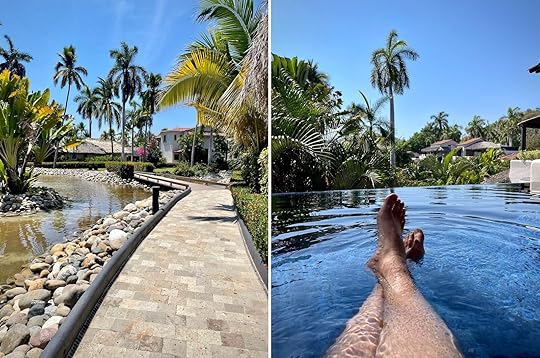
Photo: Nickolaus Hines
Thompson Zihuatanejo has 56 guestrooms and suites. The villas are surrounded by various types of palms that lend an air of leafy privacy. While it’d be easy to get caught appreciating the plant life from your balcony, the design in the rooms will make you linger as well with black Oaxacan clay light fixtures, plenty of art, and a small work station.
The property has two restaurants, three pools (two adults-only), a tennis court, spa, and plenty of areas for events and general entertaining.
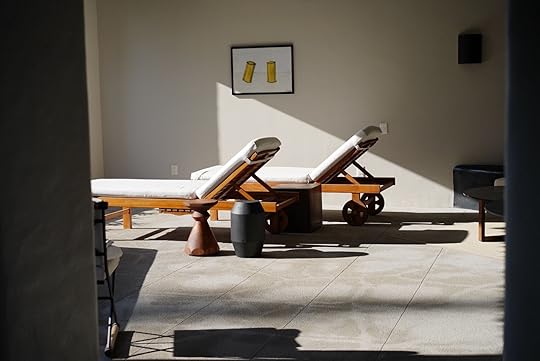
Photo: Nickolaus Hines
Many of the rooms have a private terrace or balcony with a plunge pool — spring for it if one is open and in your budget. And while the beach is visible from just about everywhere on the property, it doesn’t get closer than the beach suite. The 11 swim-up suites are perfect for a group, as there’s a shared pool in the middle that looks out onto the ocean just steps away.
Room rates range from about $600 for the king bed without a plunge pool to about $1,600 for the top-of-the-line Thompson suite.
The food at the Thompson Zihuatanejo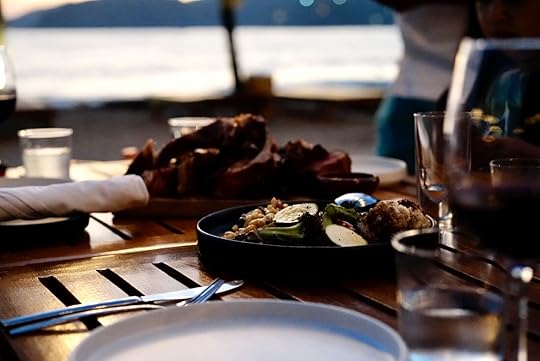
Photo: Nickolaus Hines
On one side of the property is the restaurant Ceniza, which means ash in Spanish. It’s a fitting name for a chef that bases so much of his work around open flames and wood-fired cooking. The restaurant is based around a palapa — a thatched-roof structure open on all sides. Menu items range from elevated comfort options (scallop and lobster empanadas, grilled local oysters, and squash tortellini, to name a few) to the equally delicious options you won’t easily find stateside (rib eye with local cacao and huitlacoche, or soft shell crab tacos).
The other restaurant bar, Hao, is right on the sand and has lunch options like crudos made with the catch of the day, sushi and poke, tacos, as well as whole fish and whole lobster. Fish, beef, and chicken off the grill are the stars on the dinner menu.
Cerrillo leans on the bounty of local food as much as possible. Produce from the hotel’s on-site garden at the time I went included corn, beans, radish, carrots, cinnamon, peppers, different types of squashes, bananas, tomatoes, and the herb epazote.
Experiences and activities at Thompson Zihuatanejo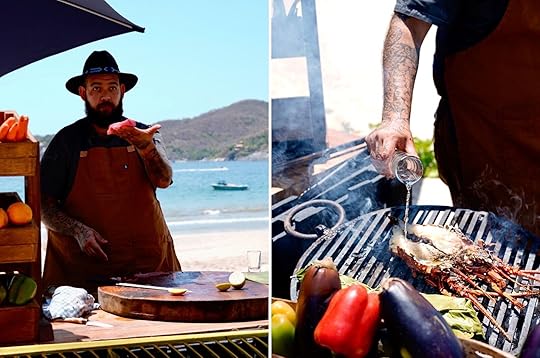
Photo: Nickolaus Hines
You’ll want to dedicate some time just for the beach. Paddle boarding (best in the morning when the water is at its calmest) and beach yoga can be arranged through the hotel. If you’re looking for something active but more dry, the hotel’s tennis instructor, a former pro and current coach, will give you lesson on the courts. A full spa will have you ready for your flight at the end of the trip — or just for another relaxing day on the beach.
Turtle releases happen just down the beach at sunset. Dolphins can be seen from the shore, as can humpback whales as they pass by from December through April.
While there’s lots to be said about eating at the Thompson’s restaurants, food lovers will want to get a cooking class on the beach to learn how to prepare select dishes and then enjoy their work immediately after. This activity starts with a walk along the Paseo del Pescador to seek out fish and produce, then returns back to the beach in front of the Thompson.
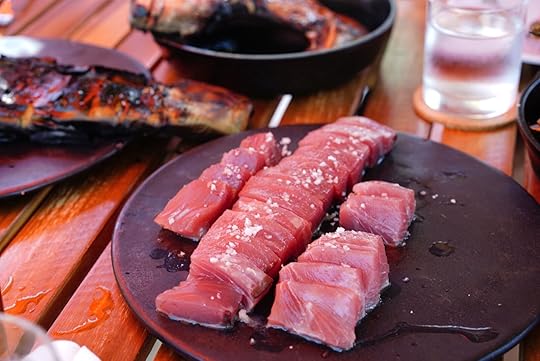
Photo: Nickolaus Hines
For something a little more spirited, there’s a combined tequila and ceviche tasting that puts tequilas and mezcals alongside raw fish from the Paseo del Pescador. Here, all of the spirits are tied to Mexico: pox from Chiapa in southern Mexico, mezcal produced locally and in neighboring Oaxaca, raicilla from Jalisco, and, of course, premium tequila.
Note that no meal at the Thompson Zihuatanejo should end until there’s dessert. These are irresistible — even for someone like myself who isn’t a dessert person — thanks to fruit and Mexico’s Melipona honey infused into numerous menu options.
What to do in Zihuatanejo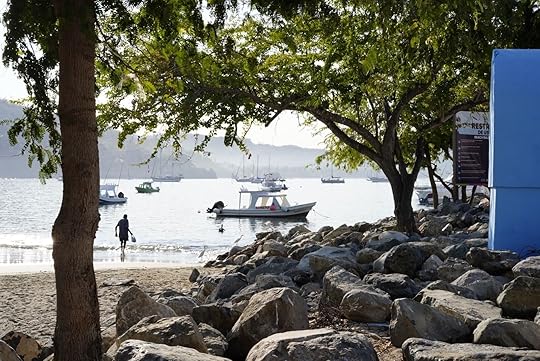
Photo: Nickolaus Hines
Food should be central to just about any trip to Mexico, and Zihuatanejo is no different. Cerrillo has an easy answer for what to do next whenever there’s down time: “One of the most interesting things you can do in Mexico. Eat.”
Go into the Mercado Municipal area of Zihuatanejo Centro for the buestos, or street food. The number of options can be overwhelming if you don’t speak passable Spanish. Cerrillos advice on the sure way to find good street food? “Taxi drivers are eating there,” he says.
Carnitas are an easy choice. For something that’s not stuffed with meat, look for someone stuffing pork-fat-infused masa flatbreads with ricotta cheese and cooking them on a comal (a flat griddle). Agua frescas made with blended fresh juice make the heat — both from temperature and the salsas — bearable.
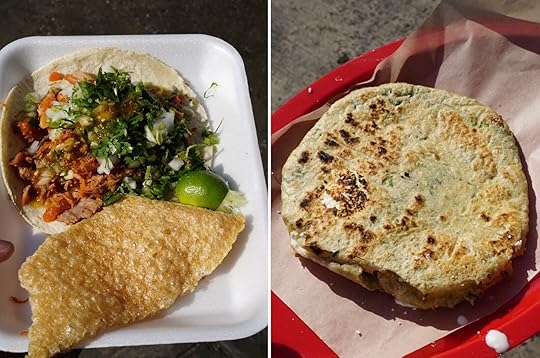
Photo: Nickolaus Hines
If you’re looking for a place to sit down and eat, stop by Angustina on the Paseo del Pescador for cocktails and dinner. Like many places in the mezcal-making states of Guerrero and Oaxaca, Angustina has its own house mezcals that chef Felipe Meneses walked us through along with a selection of his other favorite mezcals that the restaurant carries (mezcals made from the cupreta agave variety are some of his favorites). If you’d like a drink that’s mixed rather than straight up, Angustina has cocktails to choose from, including ones made with coconut, mezcal, rum, or cannabis-infused mezcal. For dinner, don’t skip the tender octopus.
You can walk the Plata Principal for a string of other restaurants that have beach seating. Evening entertainment can be found on some nights in a sunken basketball court with a colorful crocodile painted on the floor. A running trail connects it all if you start early enough to beat the heat. At the end of the walk along Plata Principal, the Museo Arqueológico de la Costa Grande displays local archaeological finds.
A number of places in Zihuatanejo do pozole Thursdays (green pozole is famous in Guerrero), making the dinner choice an easy one.
Of course, there are plenty of things to do outside of eating. Nearby Playa Manzanillo and Las Gatas offer snorkeling opportunities. At the latter, I swam to a massive underwater Jesus statue while a pufferfish and other tropical marine life swam nearby. In nearby Ixtapa, Cocodrilario Playa Linda is a small park loaded with crocodiles, iguanas, and various bird species that change with the season. I caught a ride in a van, but a bike path connects Zihuatanejo and Ixtapa and takes about three hours to complete.
Off of the resort, golfers have an option between two 18-hole courses. Horseback riding and tours of the town can be set up through the hotel.
Getting to ZihuatanejoThere are direct flights from Houston to the Ixtapa-Zihuatanejo airport. From Mexico City, it’s only a quick 45-minute flight. From the airport, Thompson Zihuatanejo is about 15 minutes.
Matador Network's Blog
- Matador Network's profile
- 6 followers



